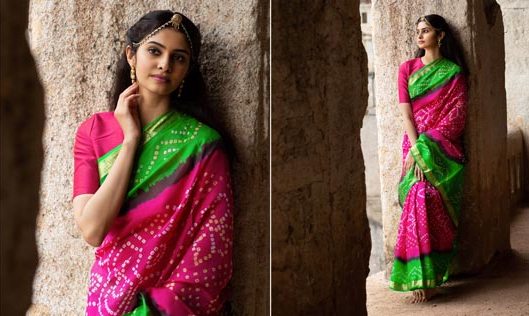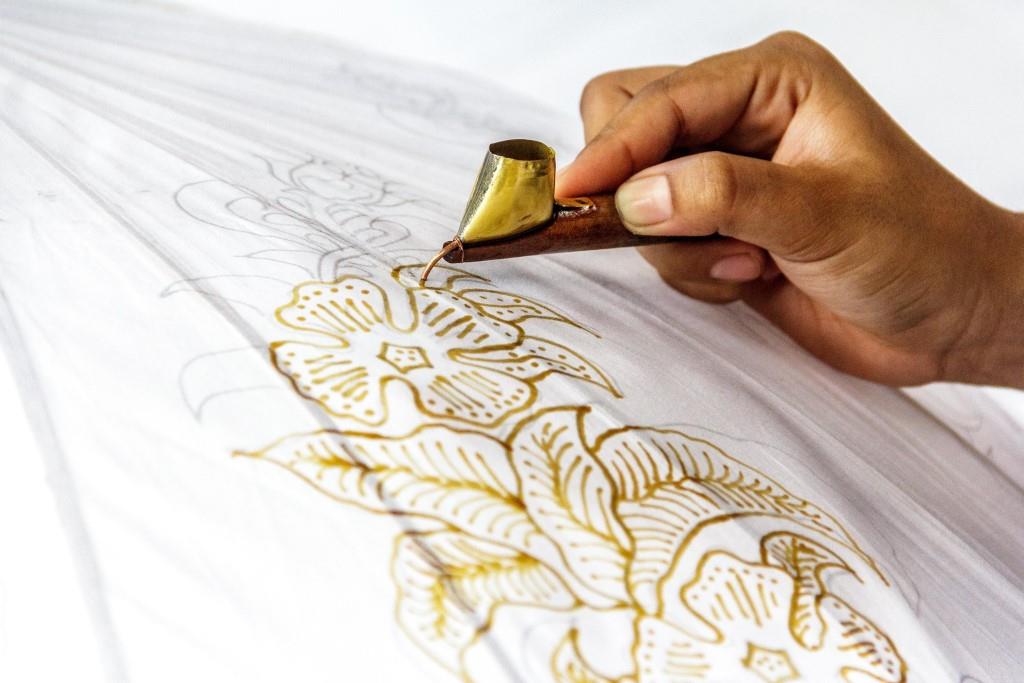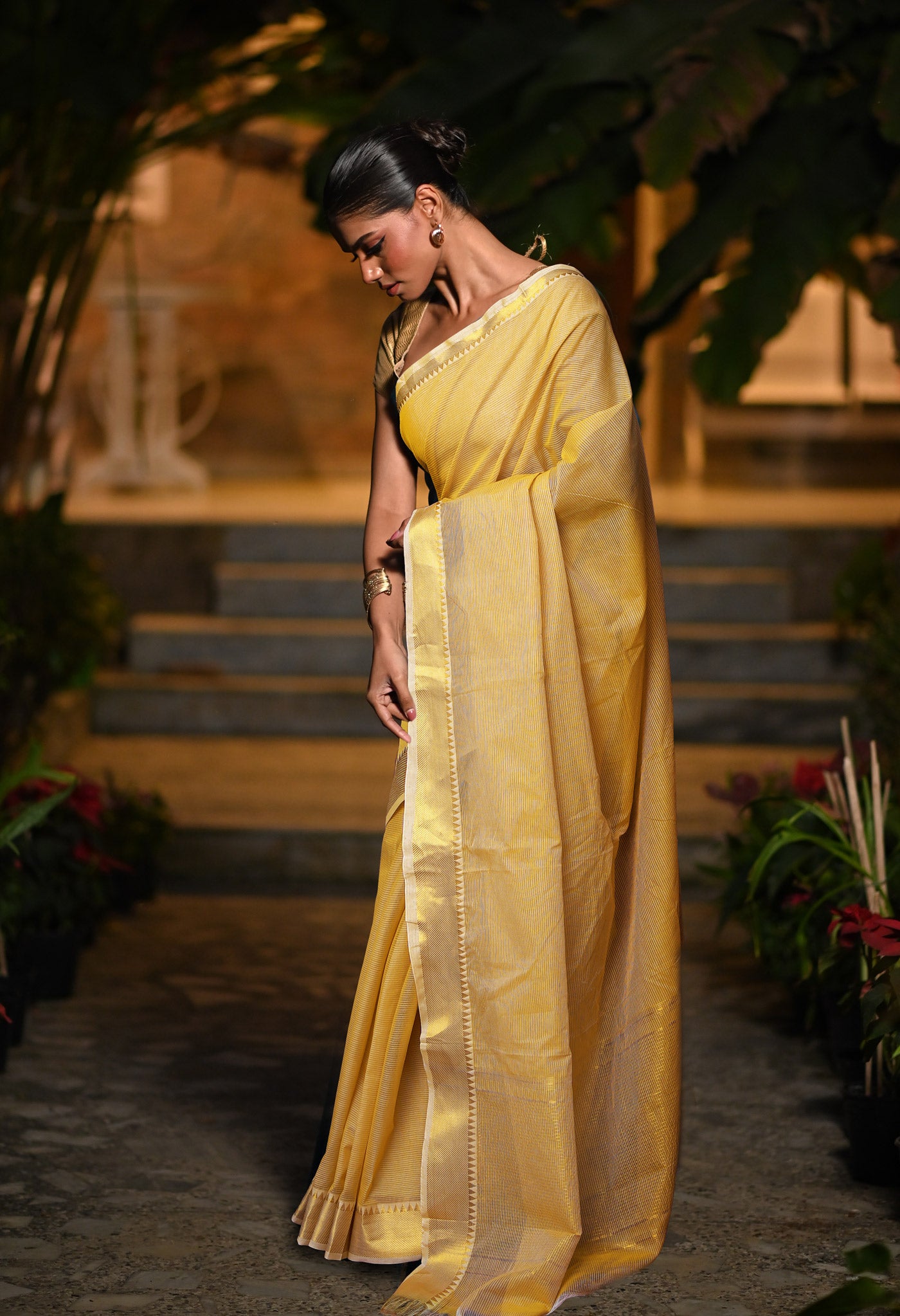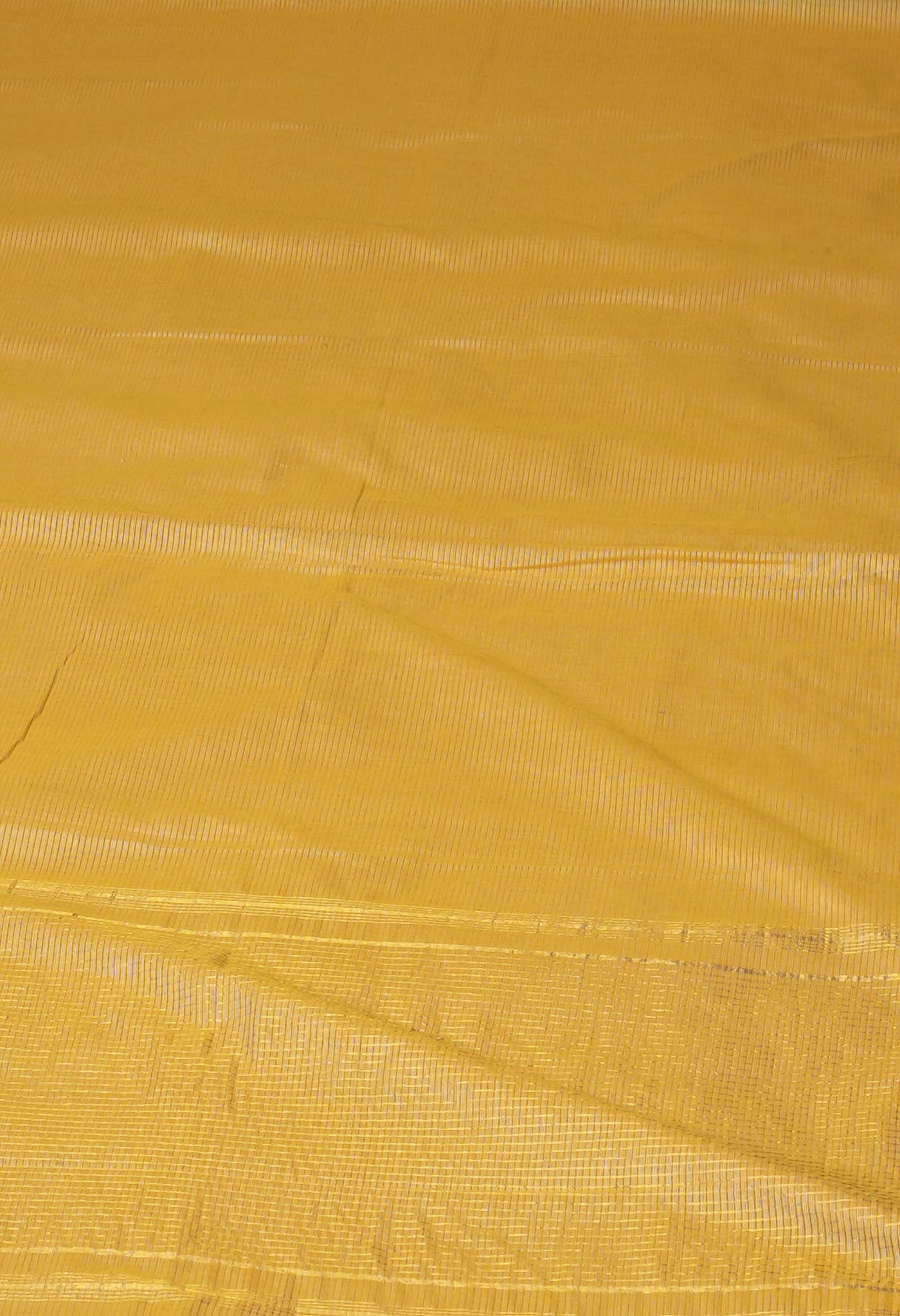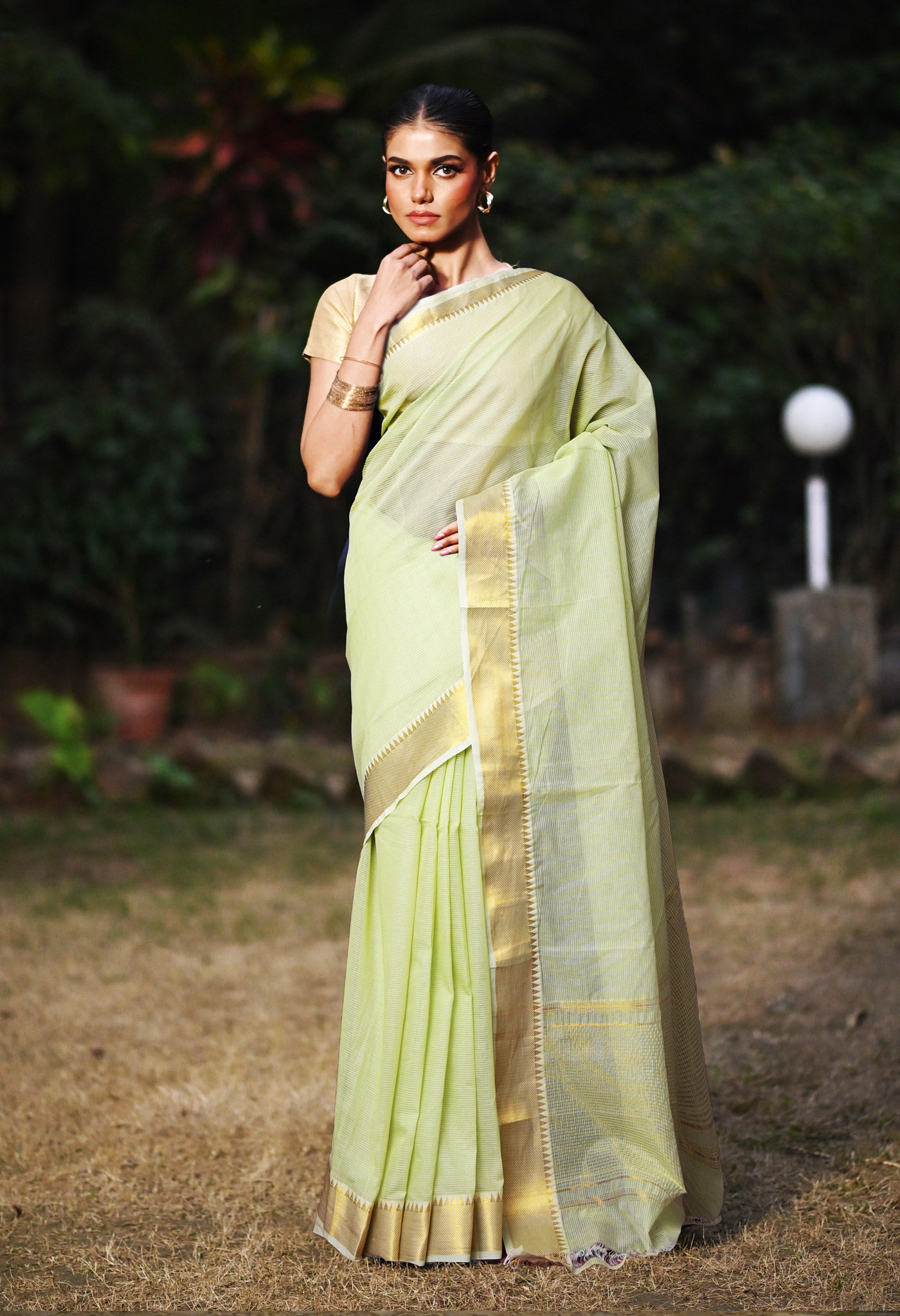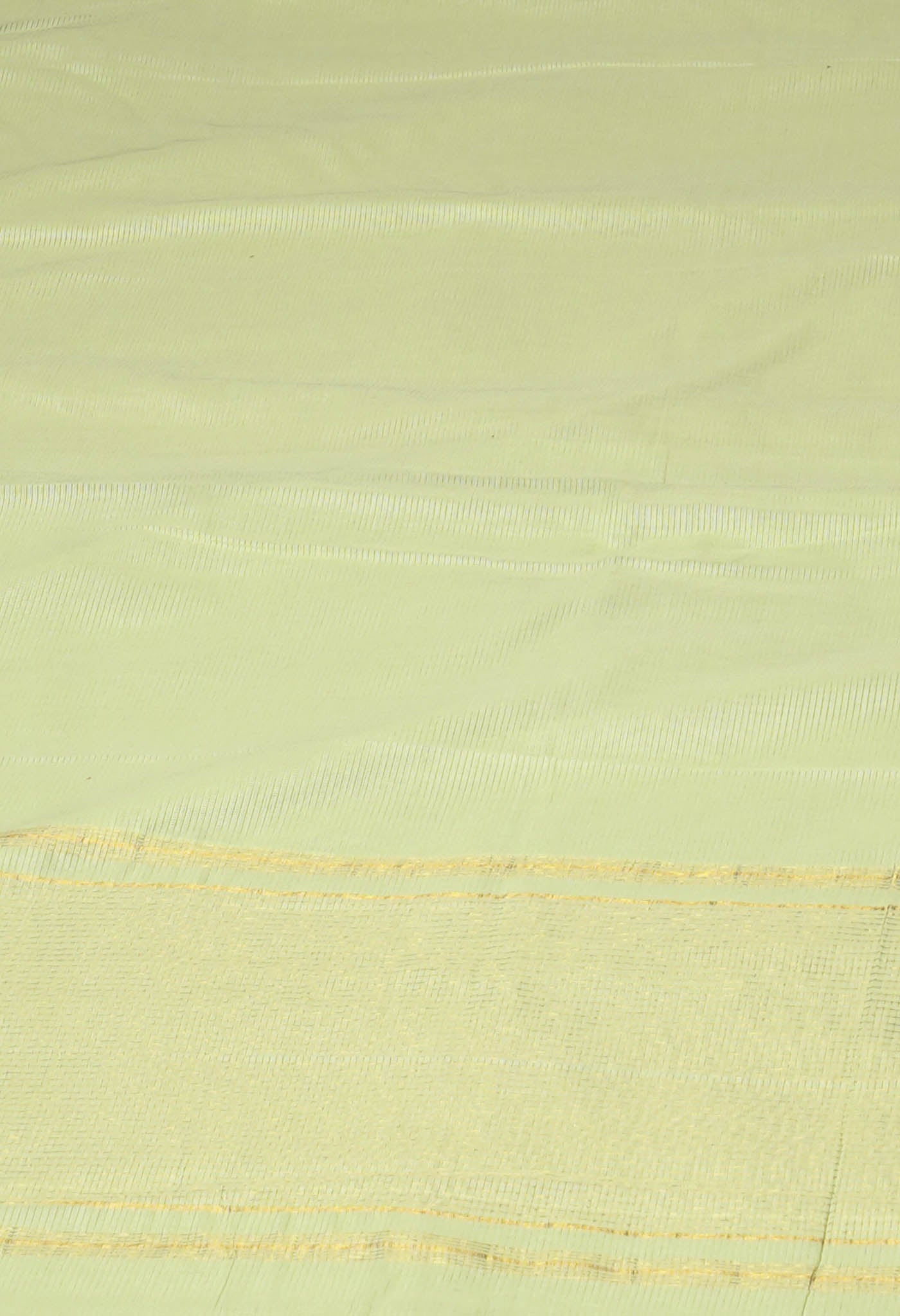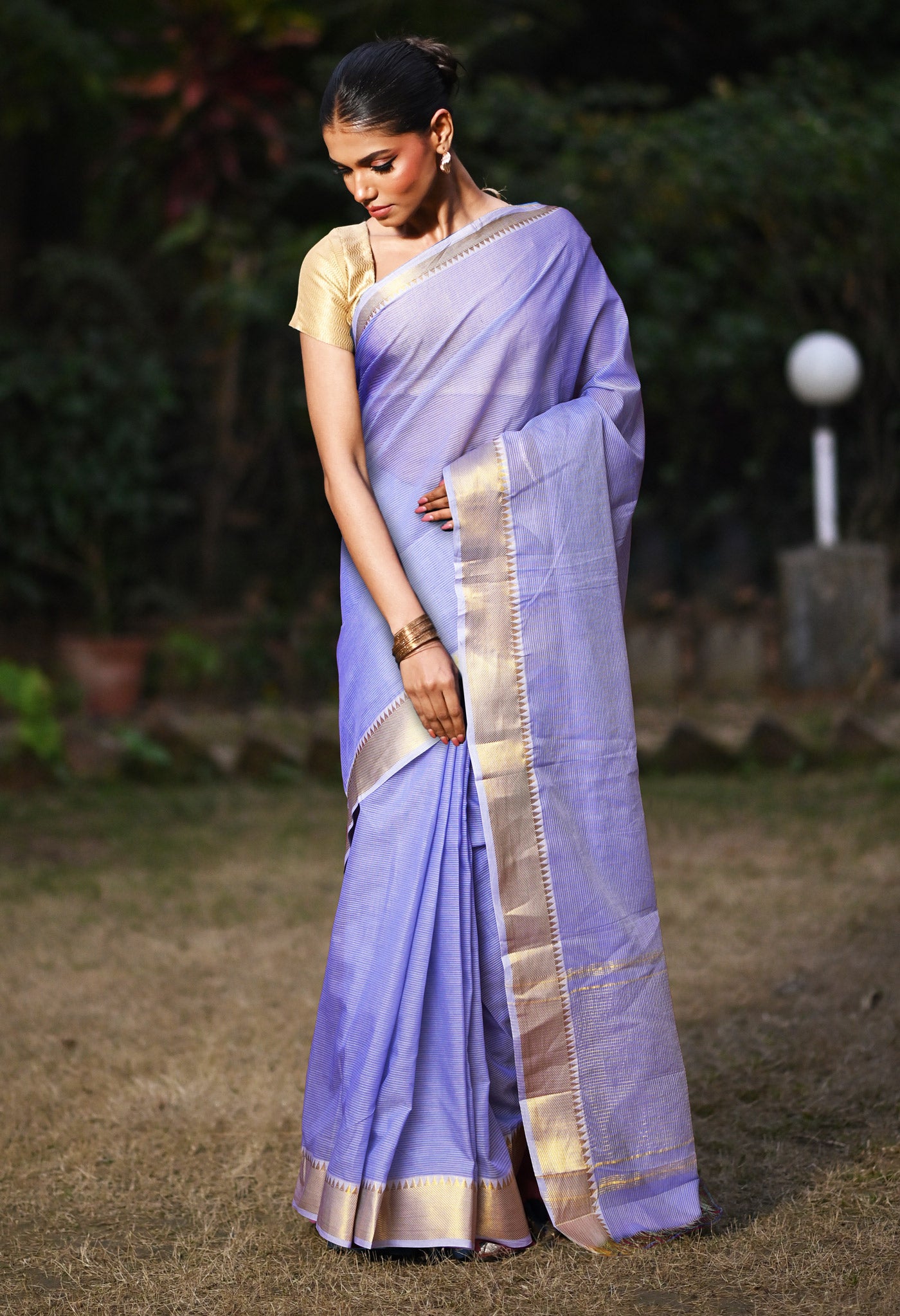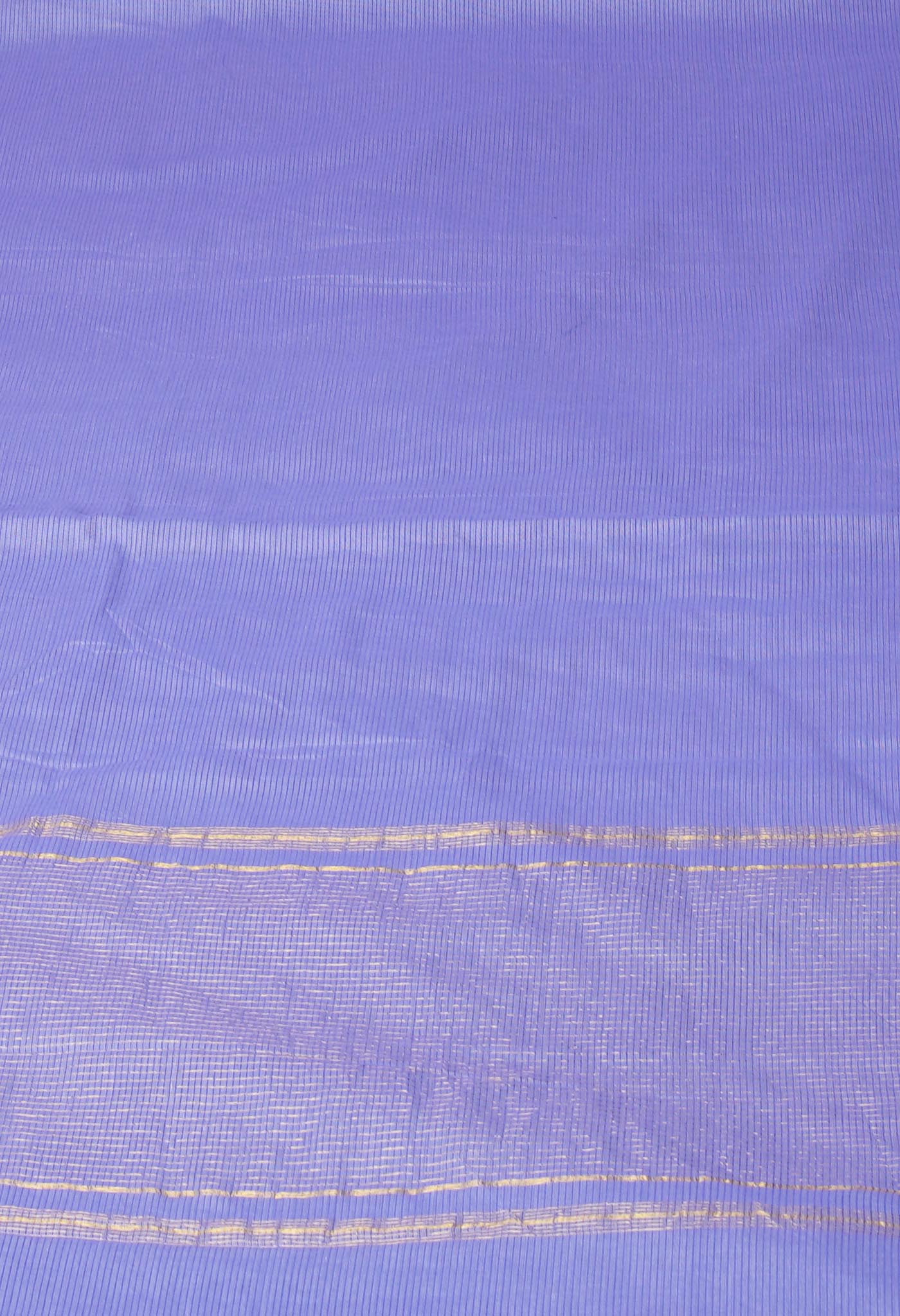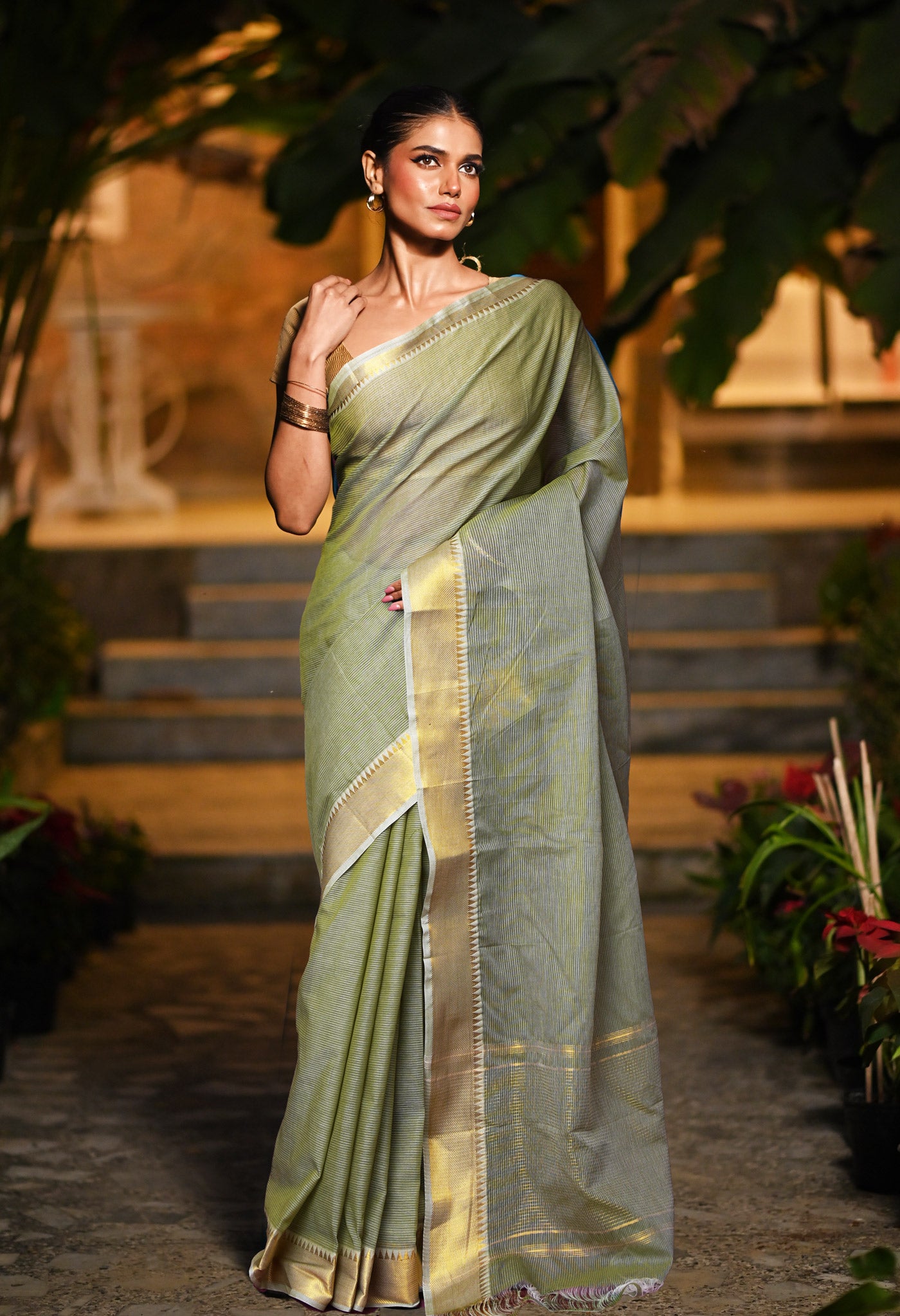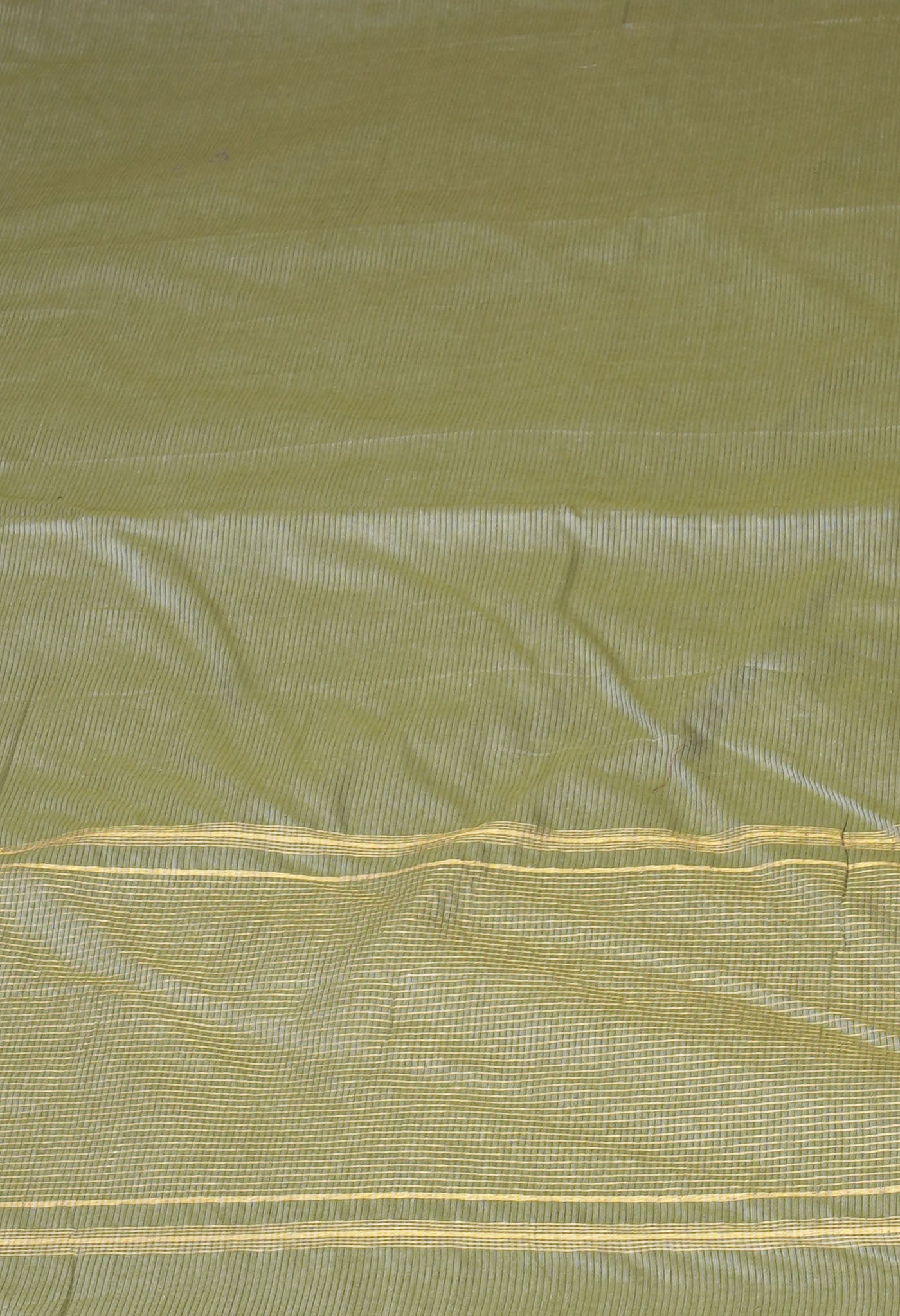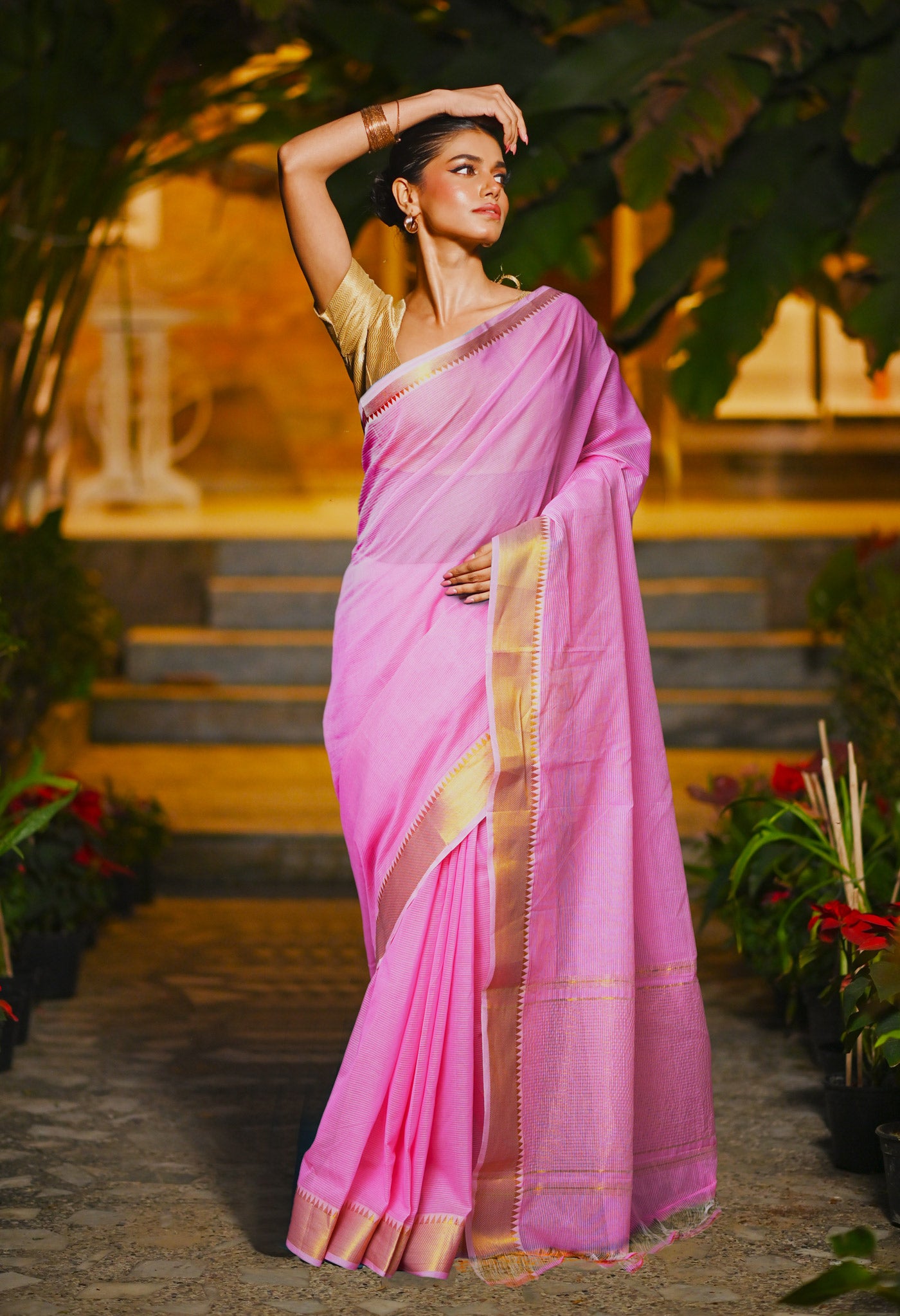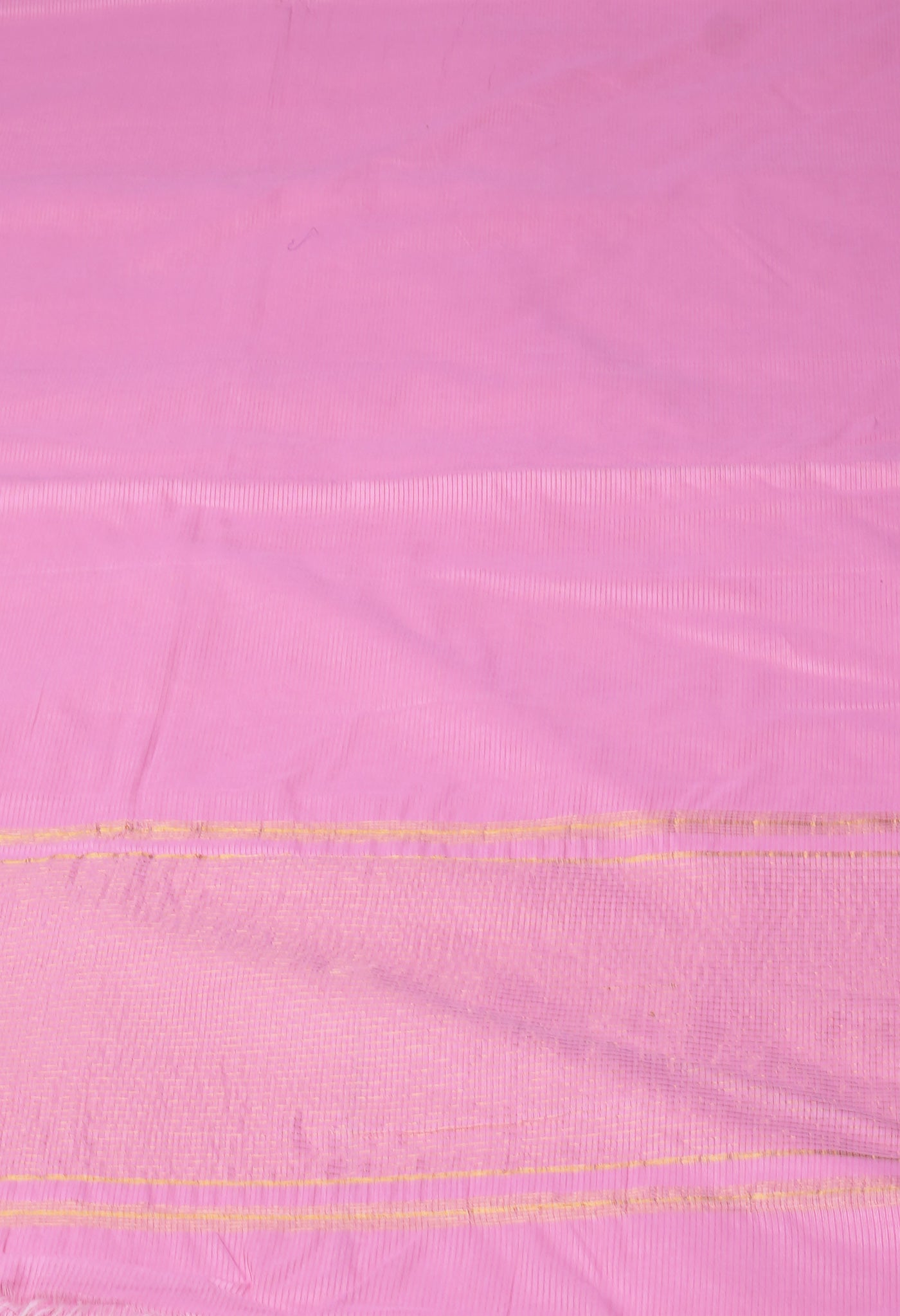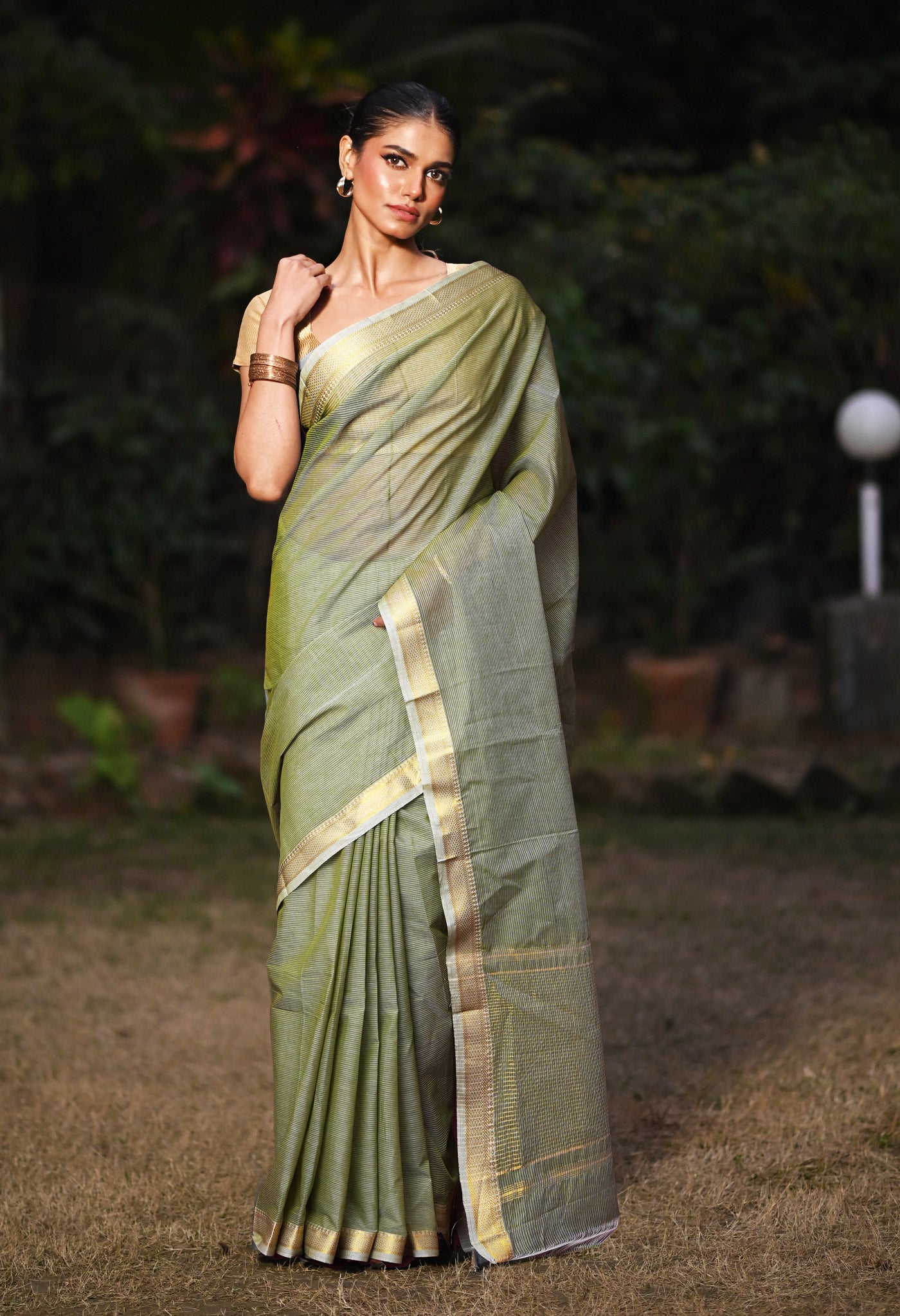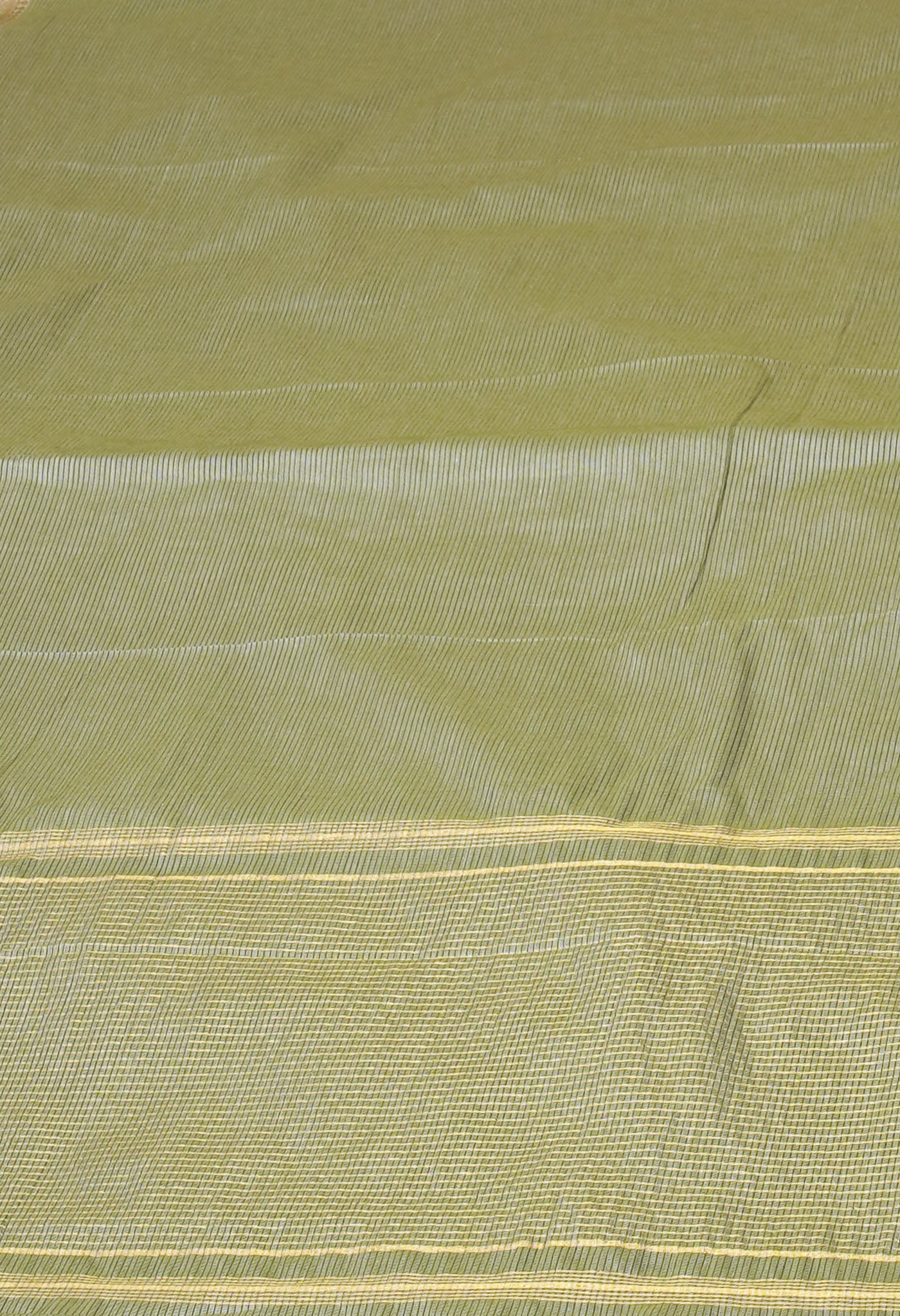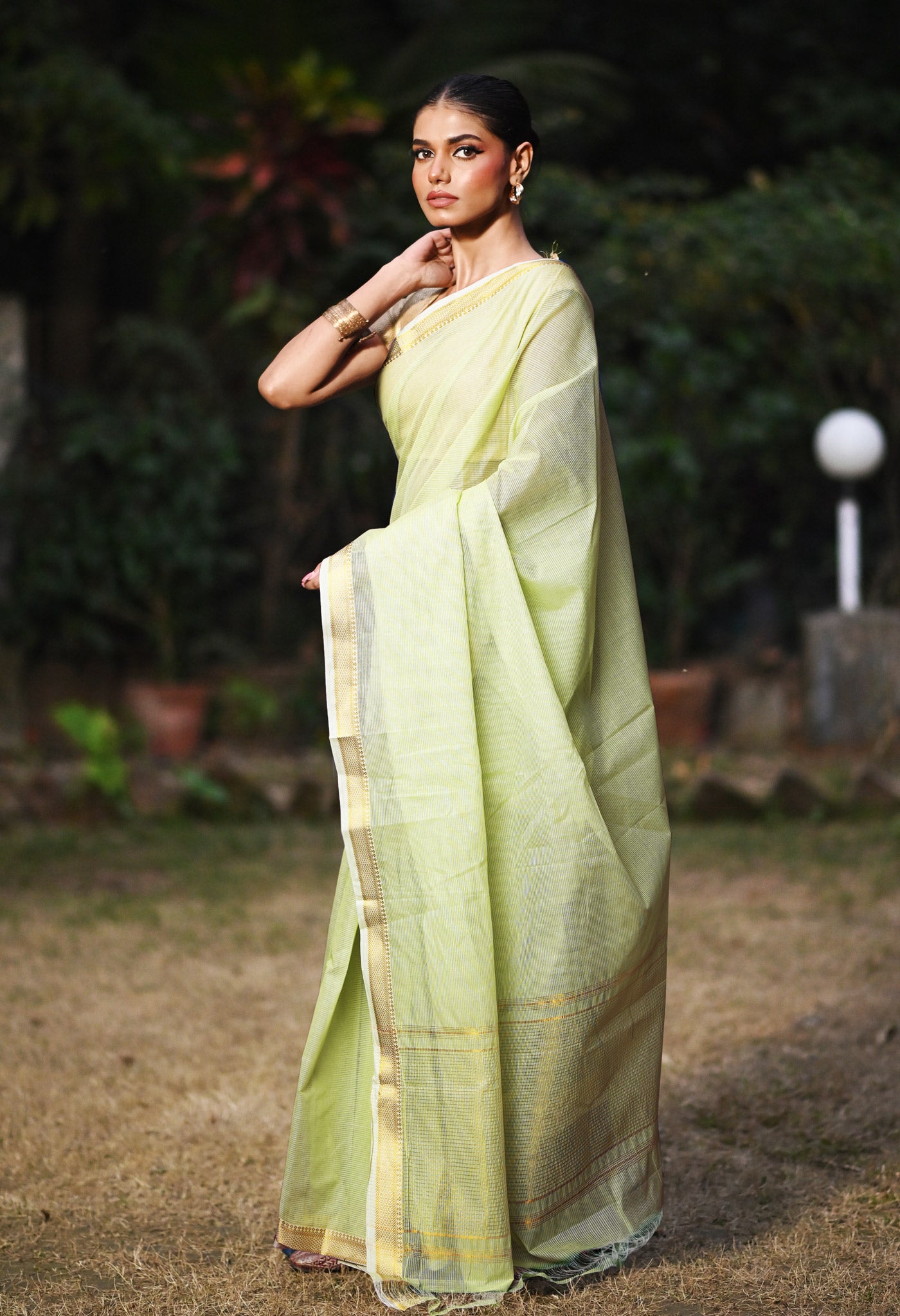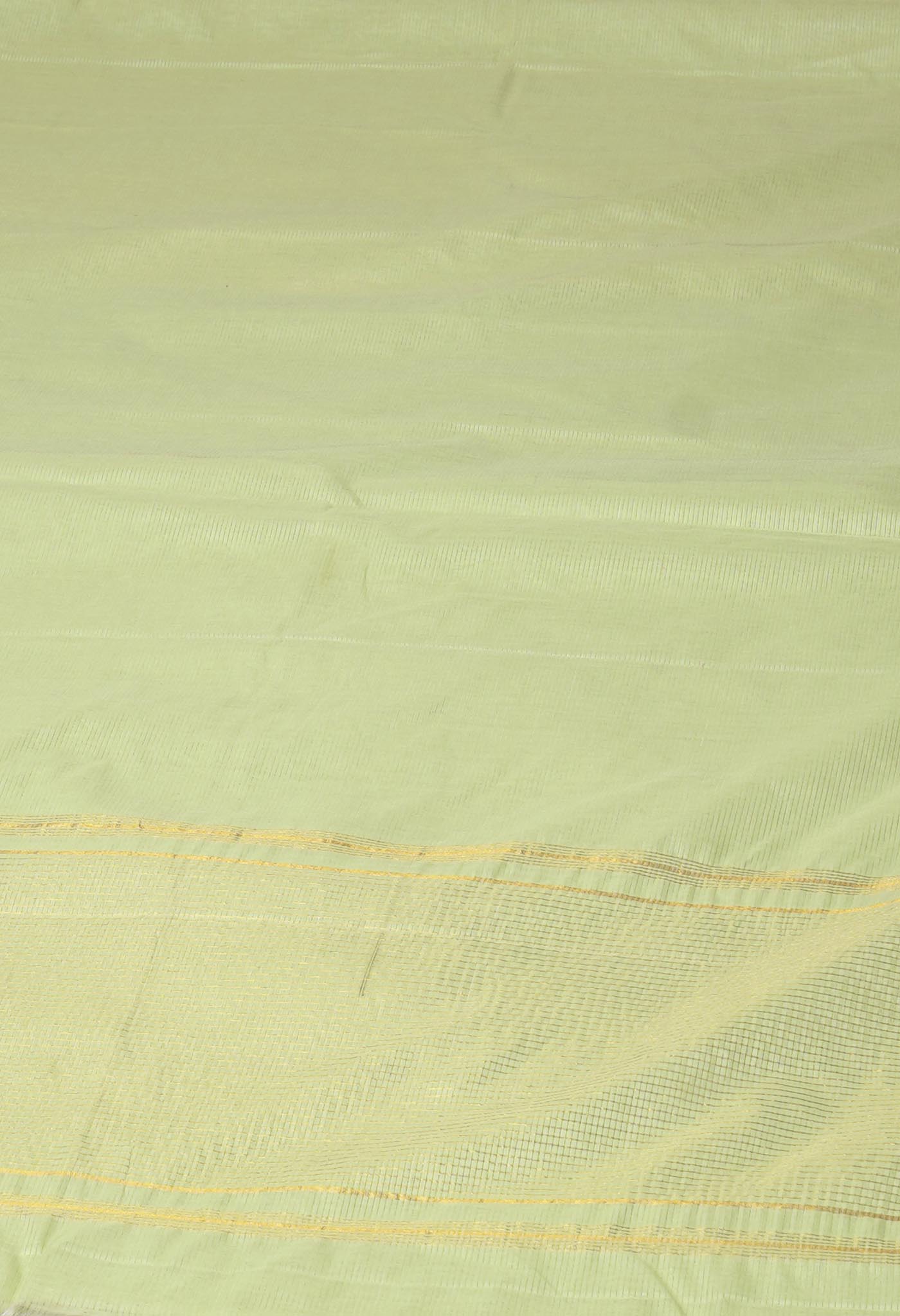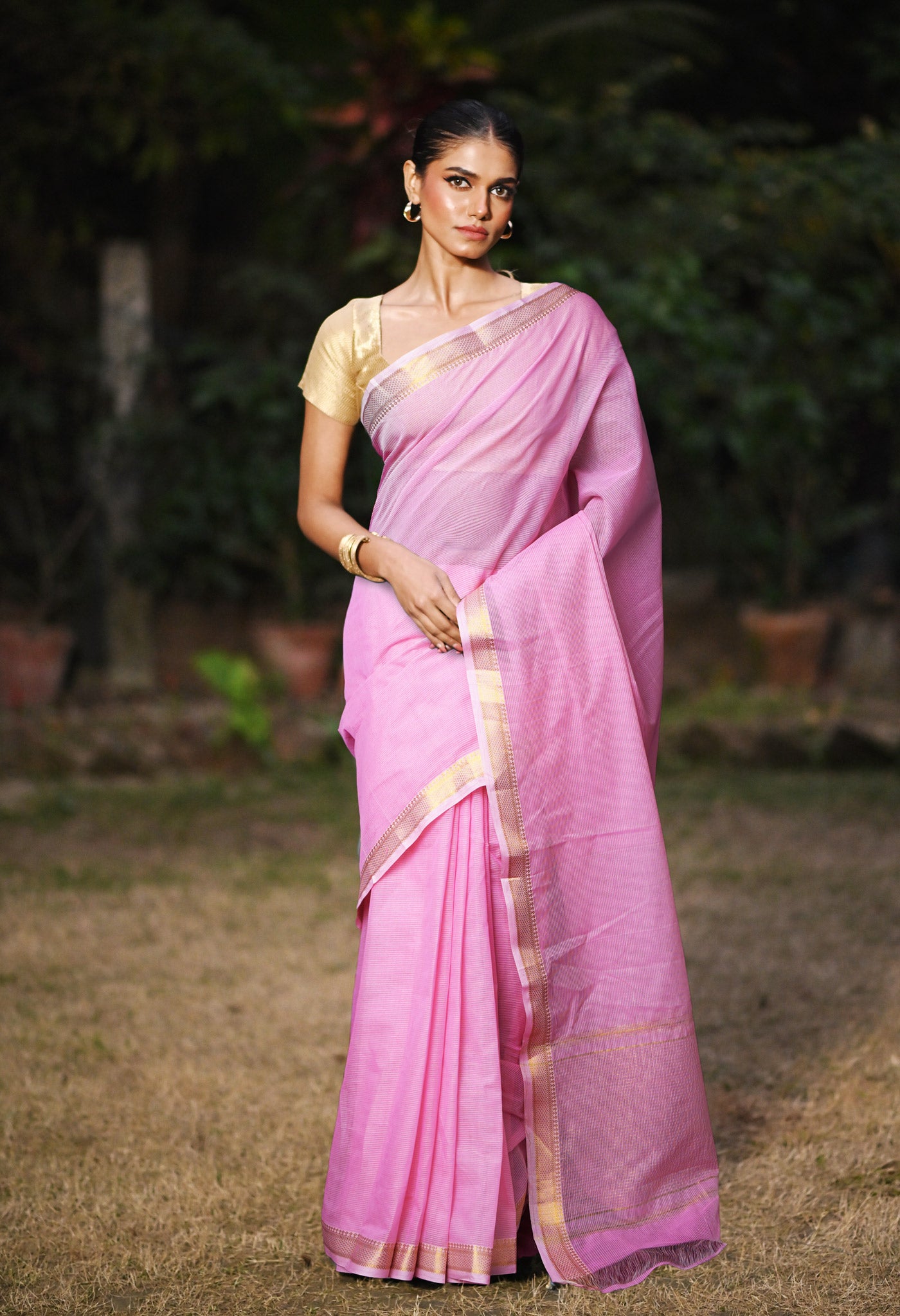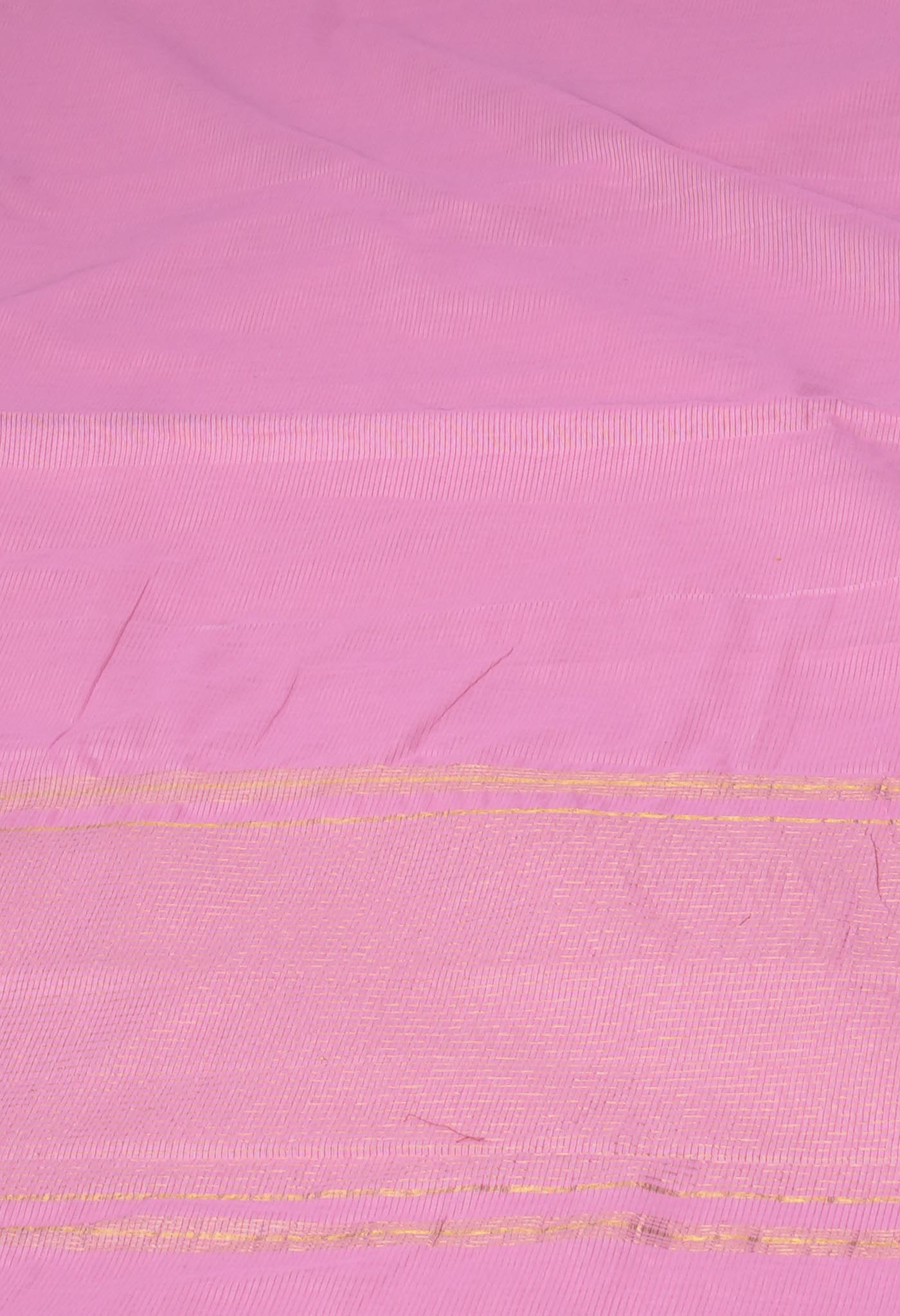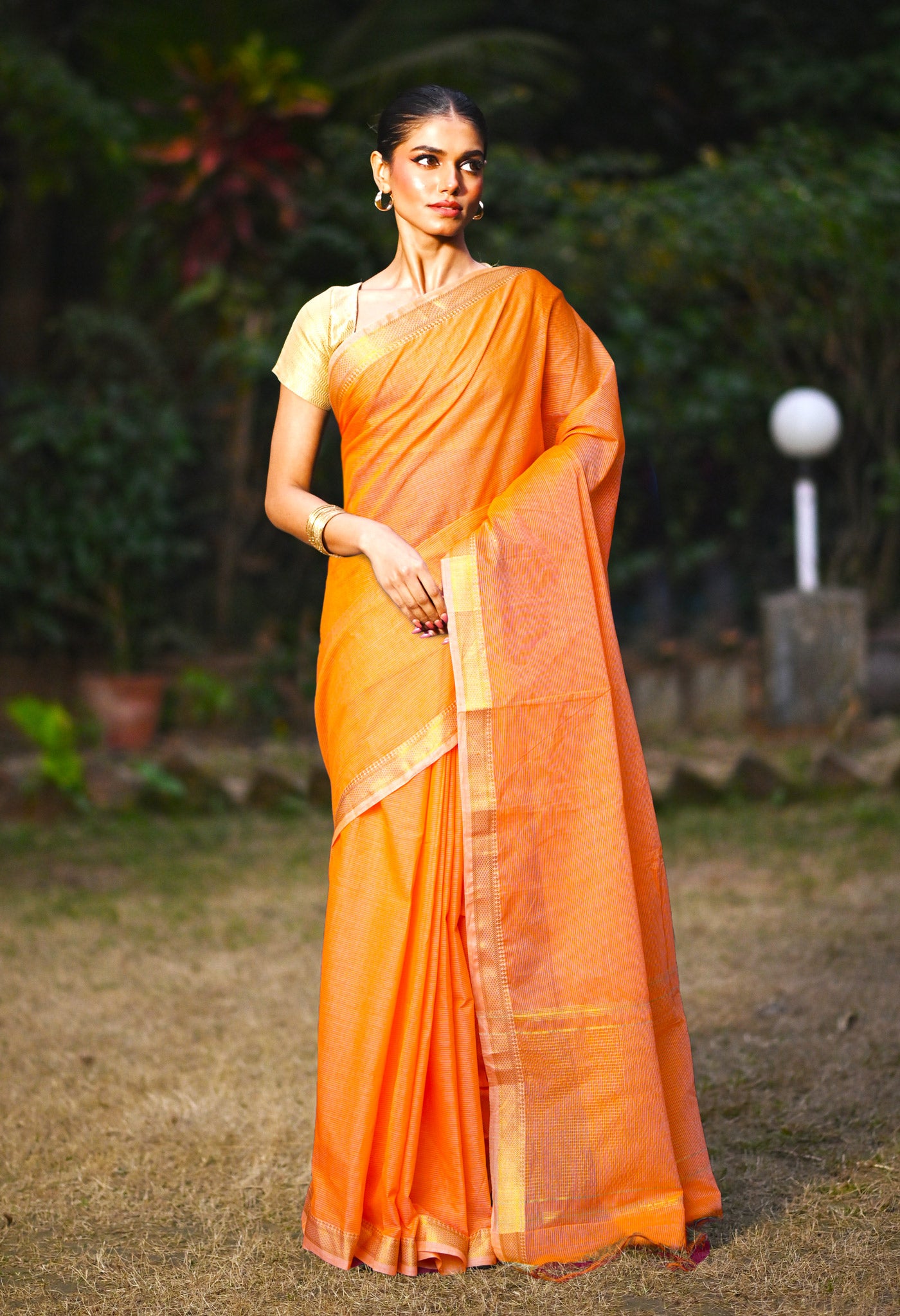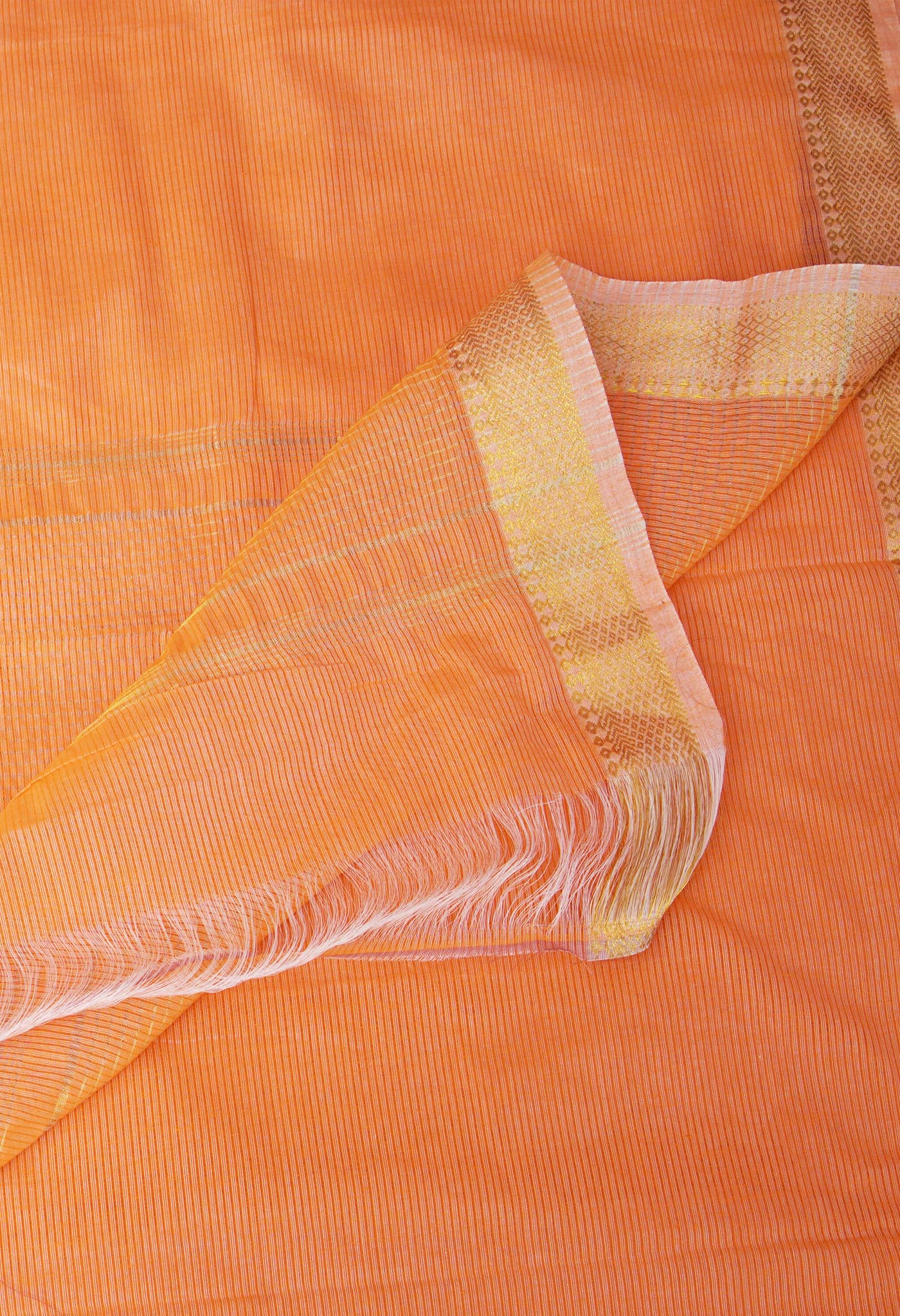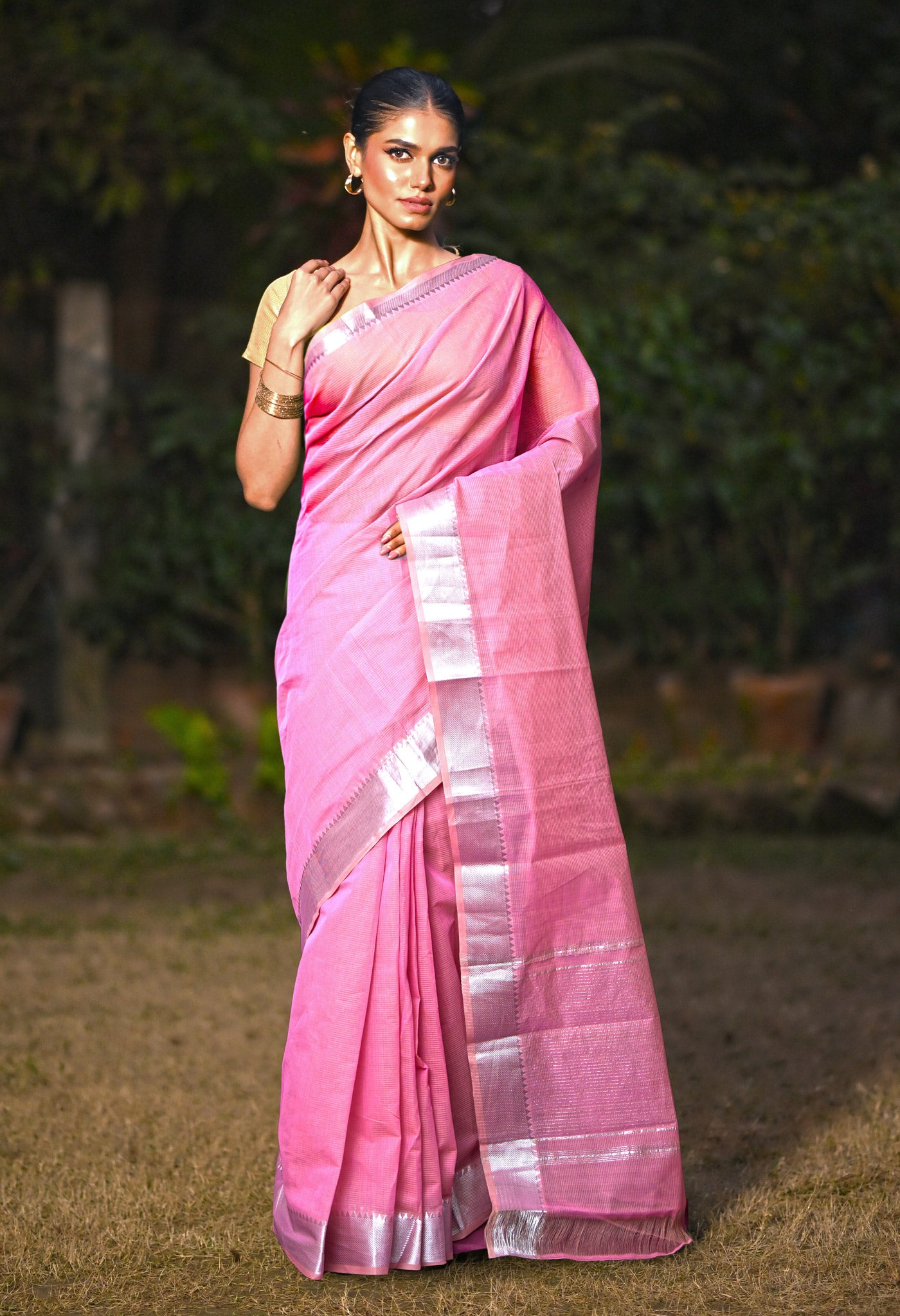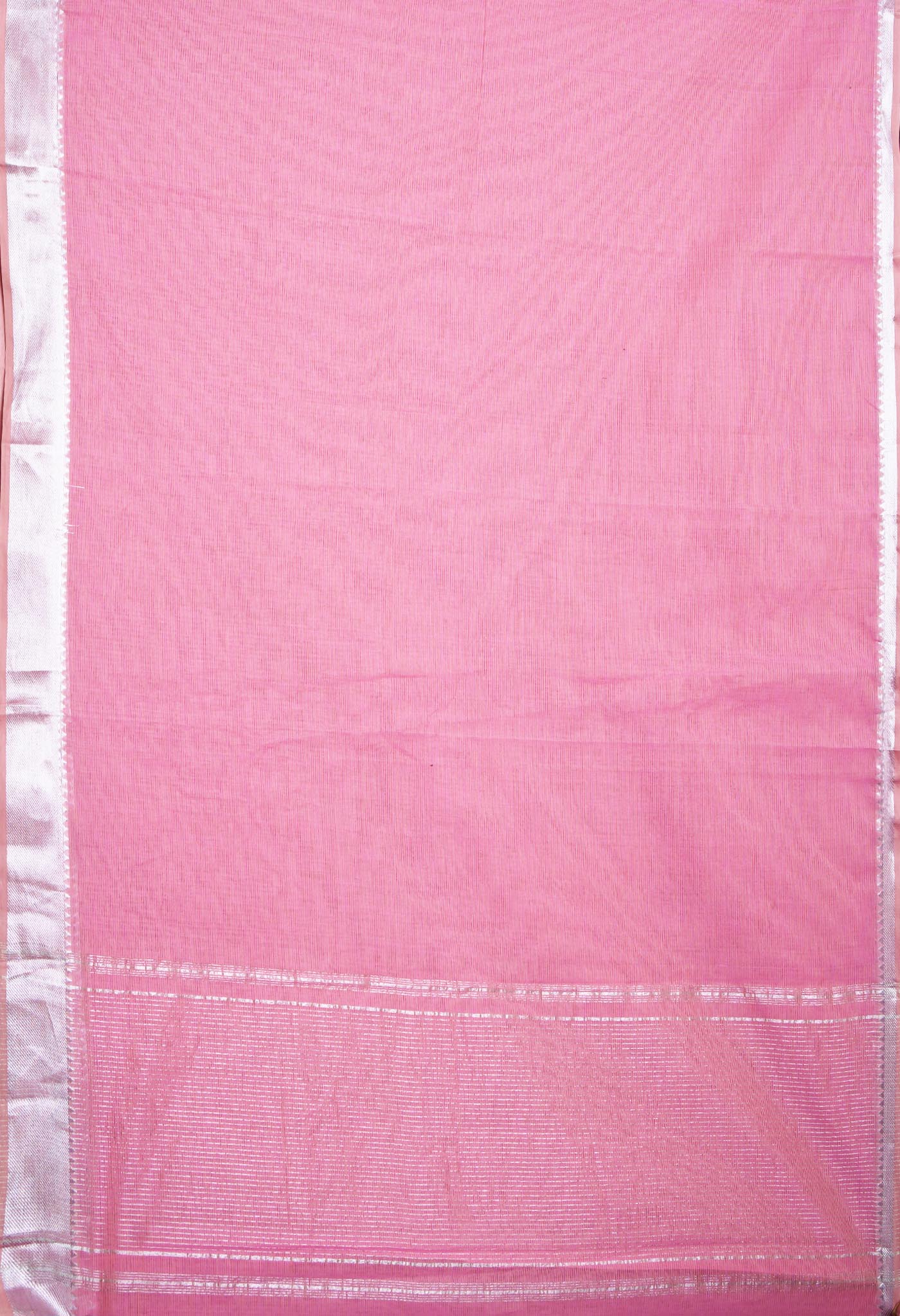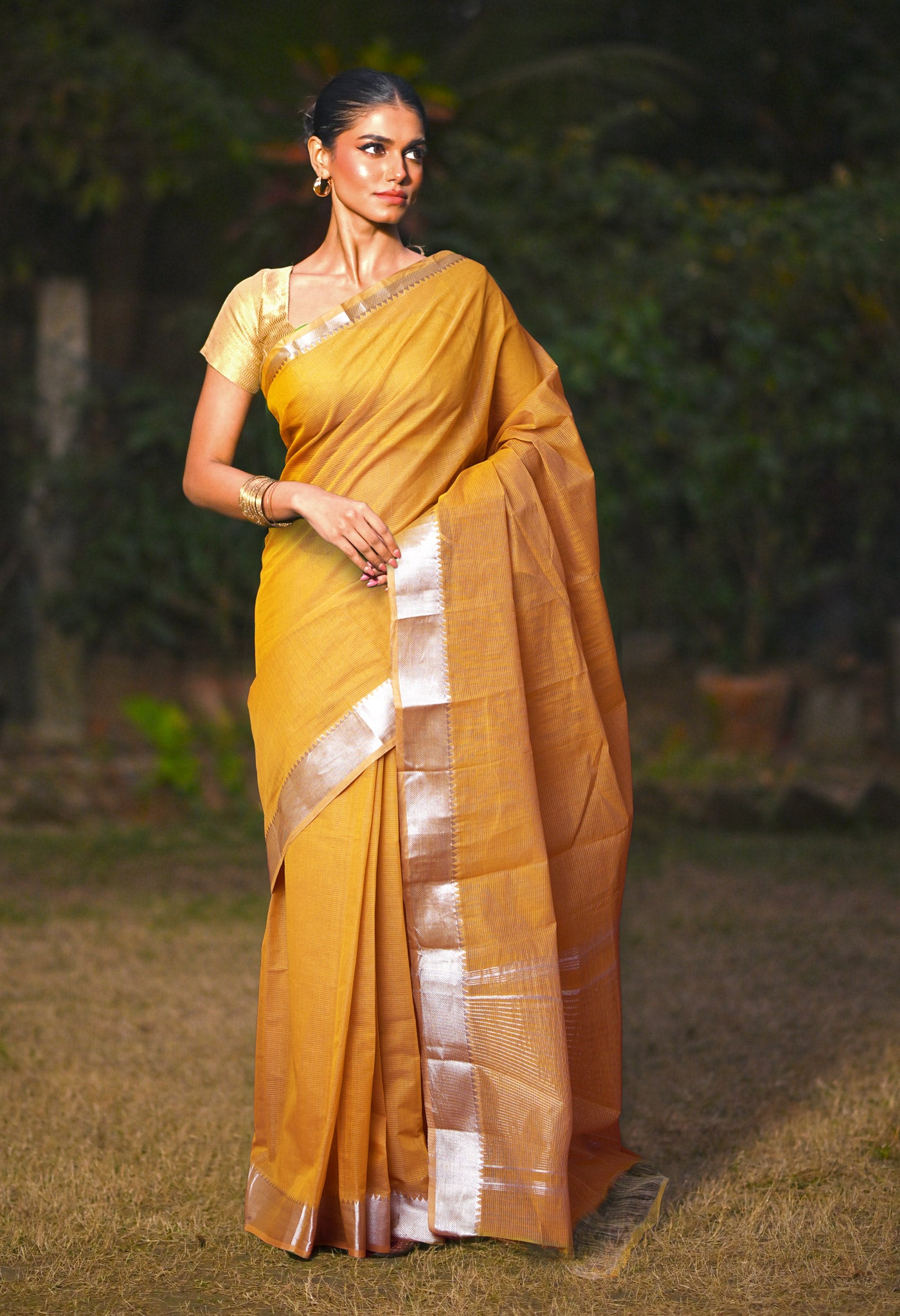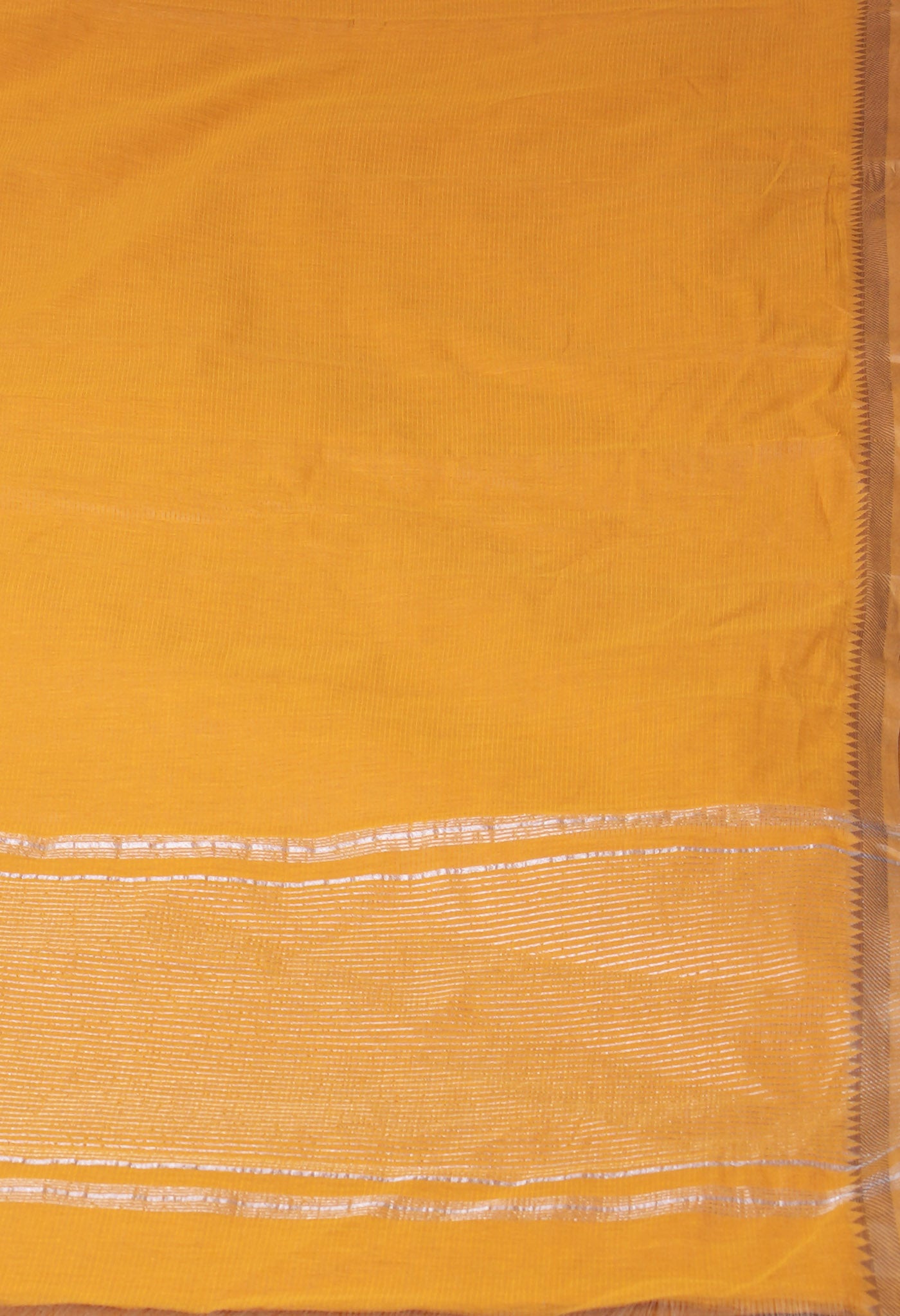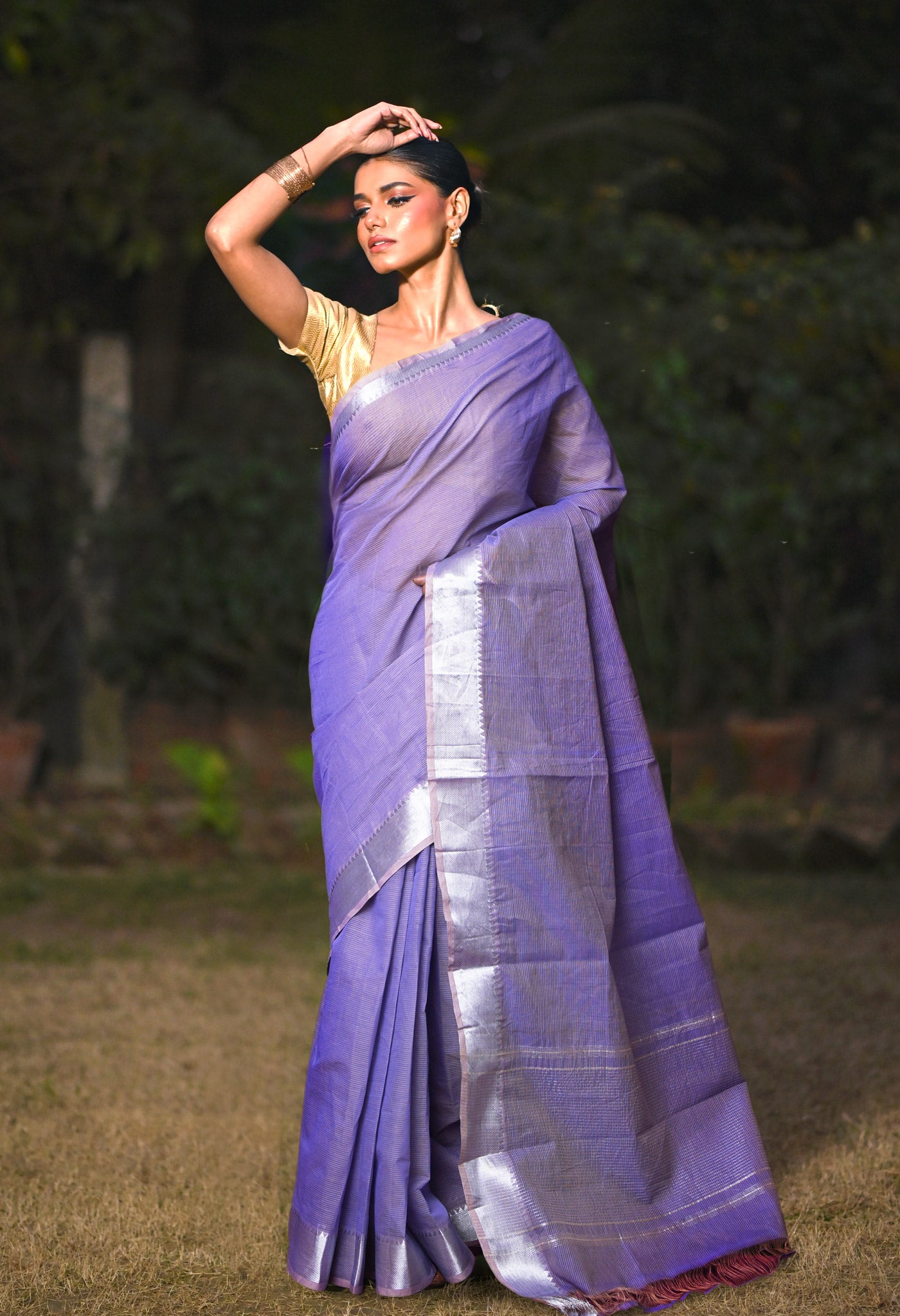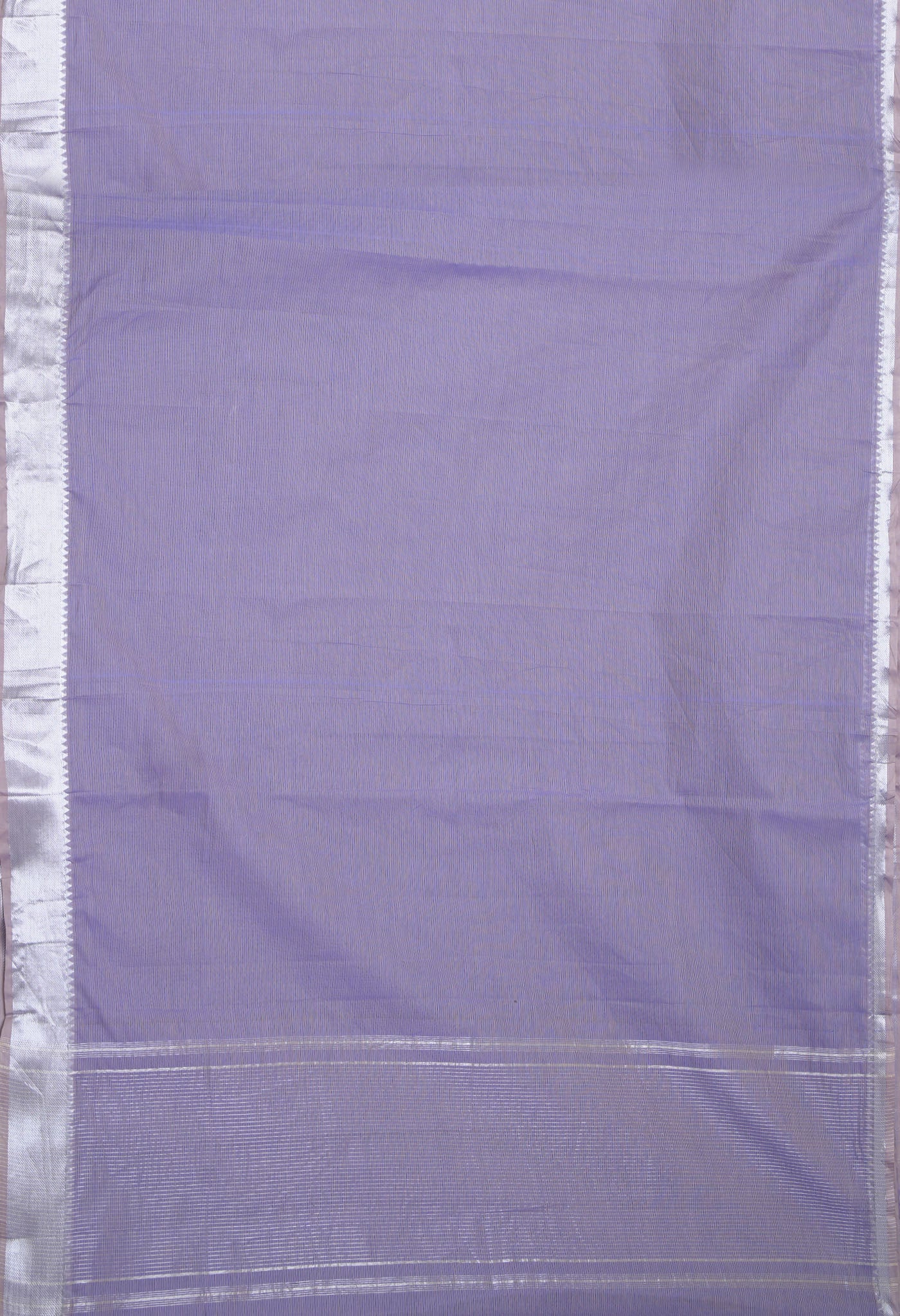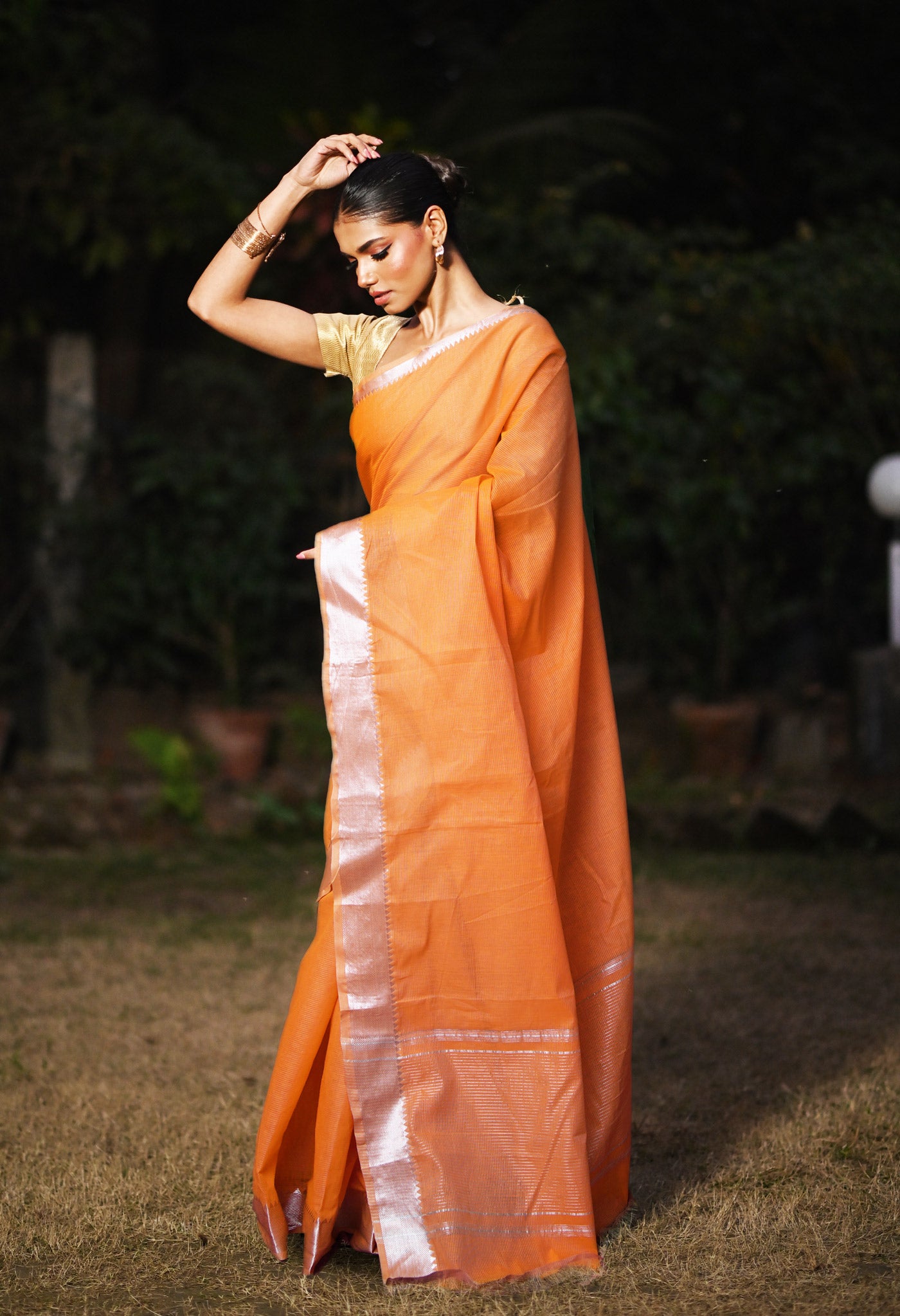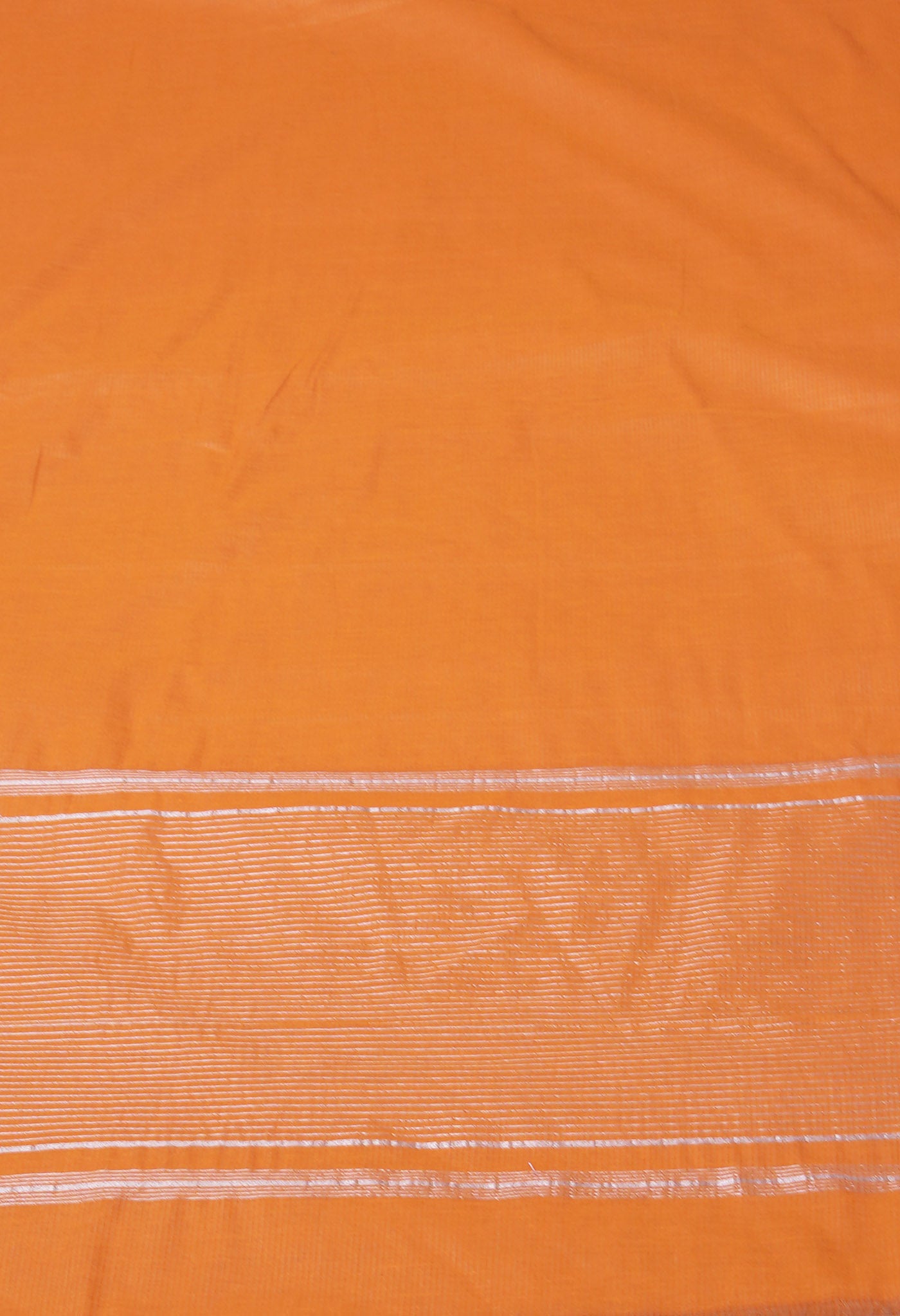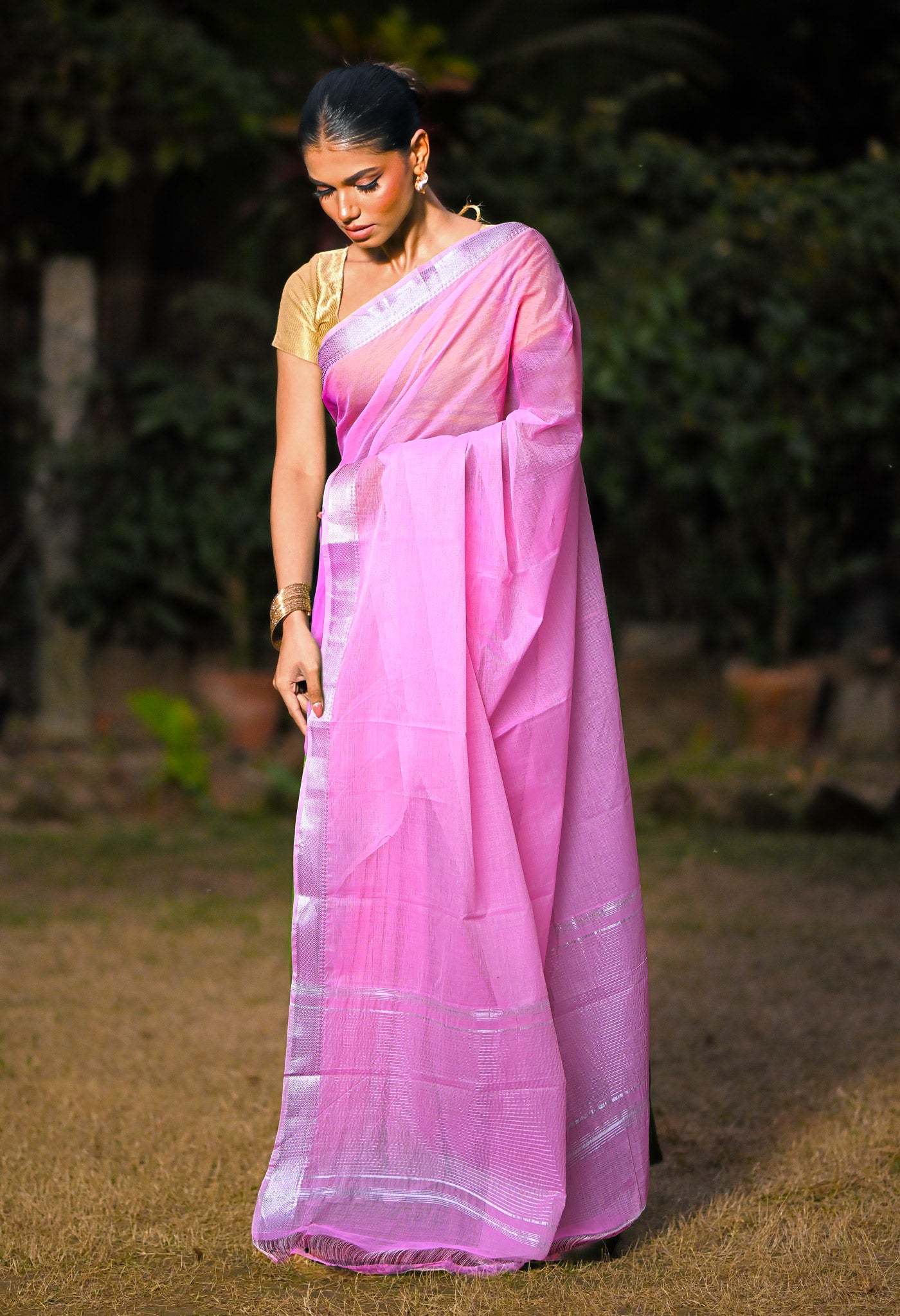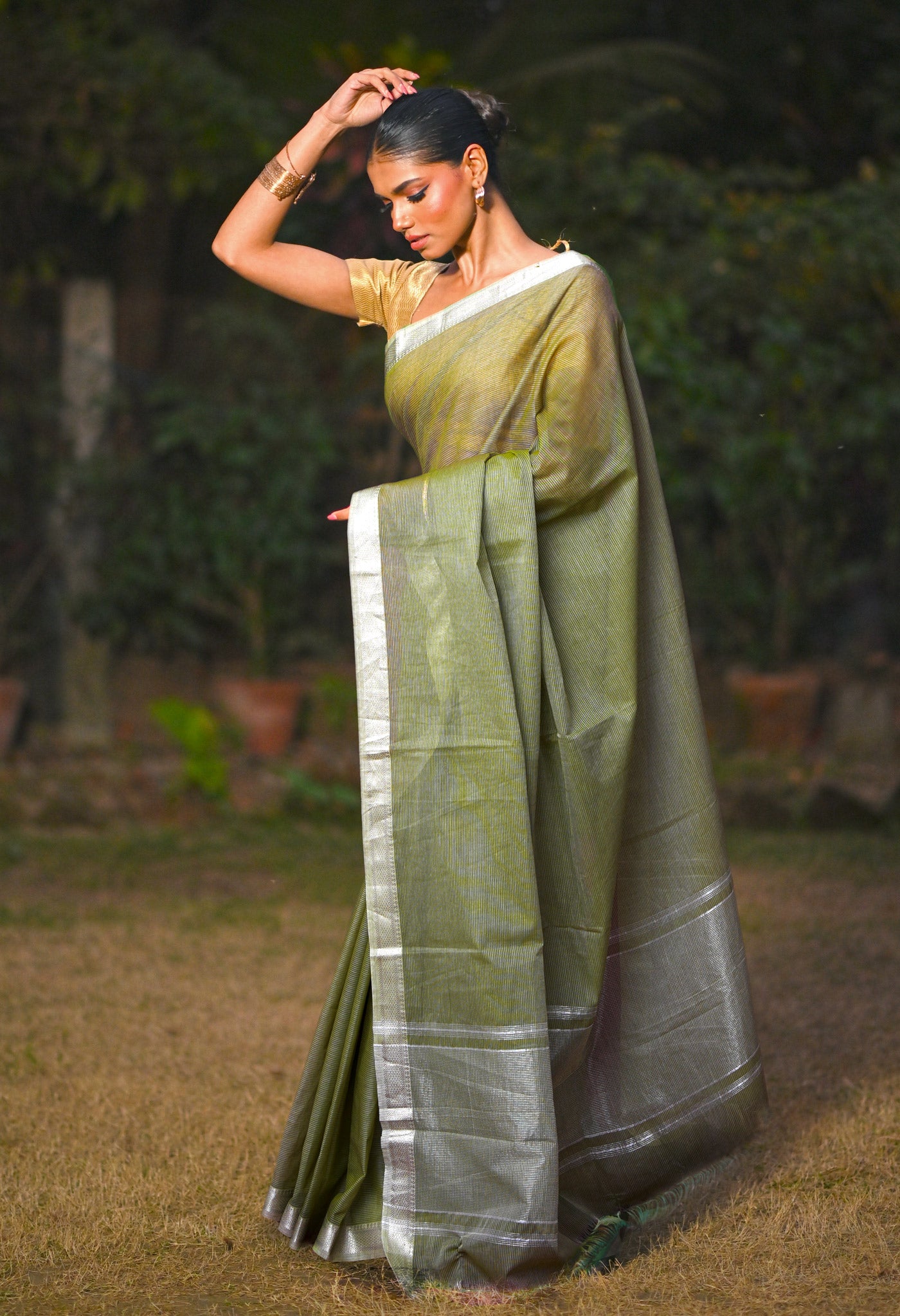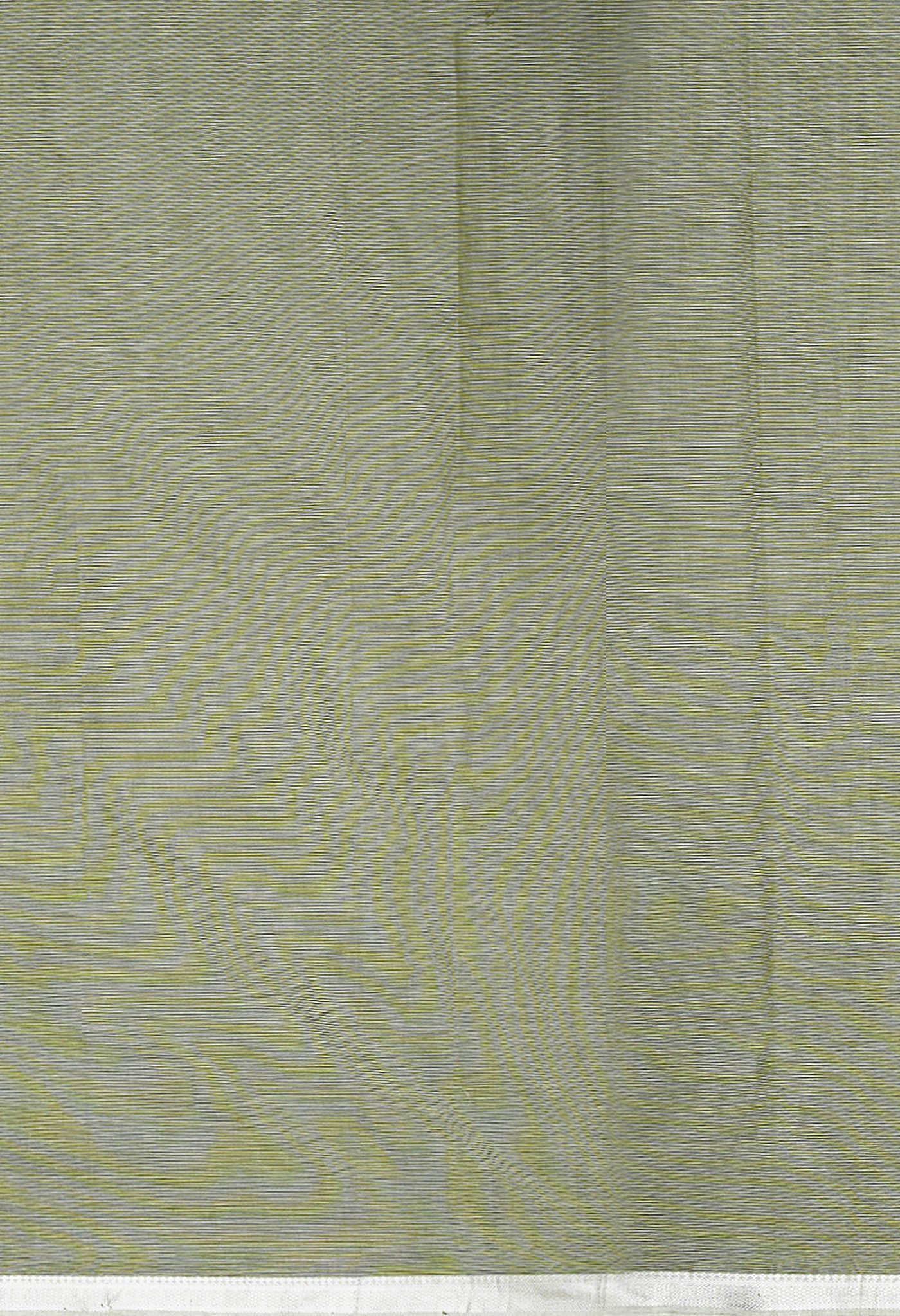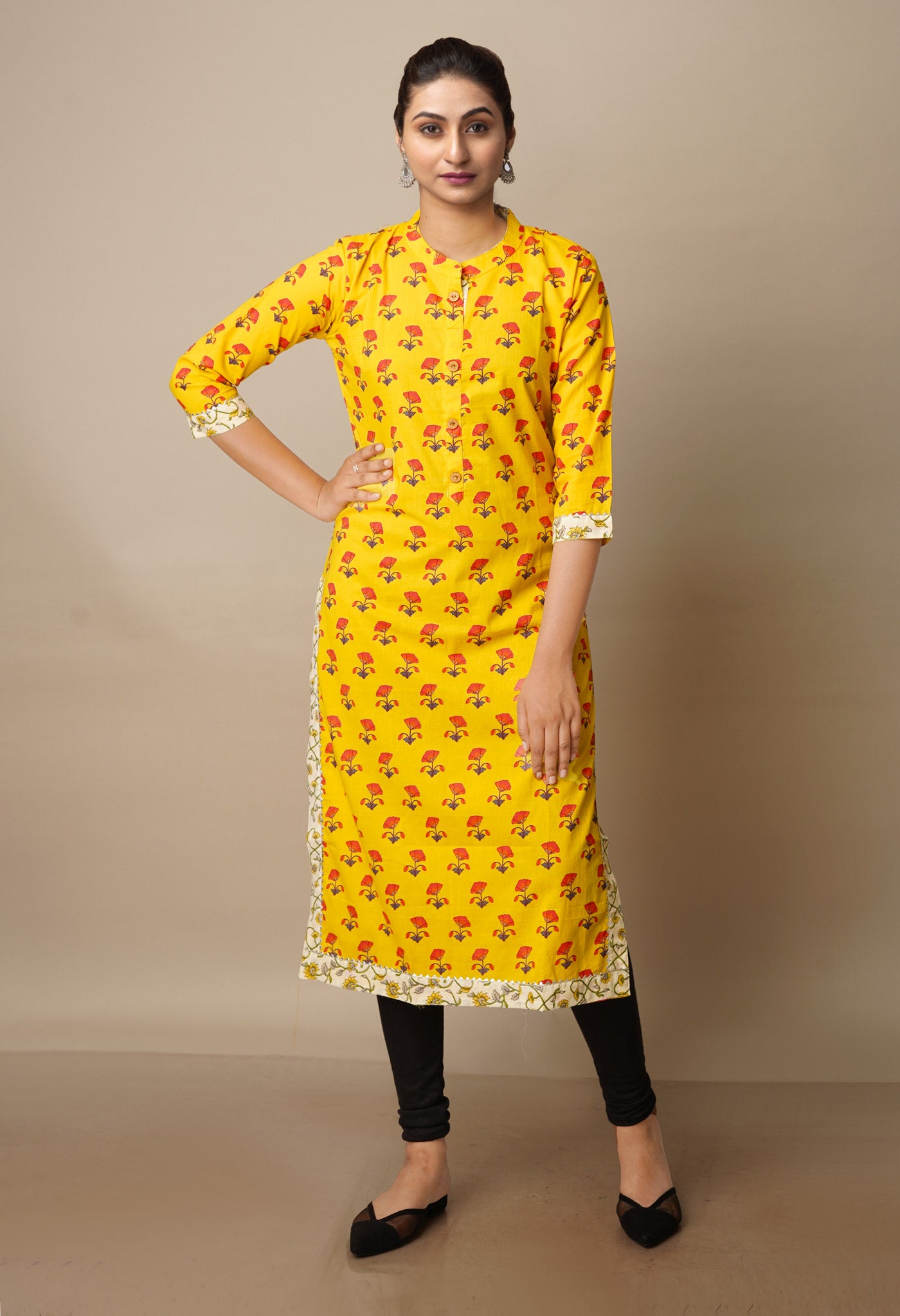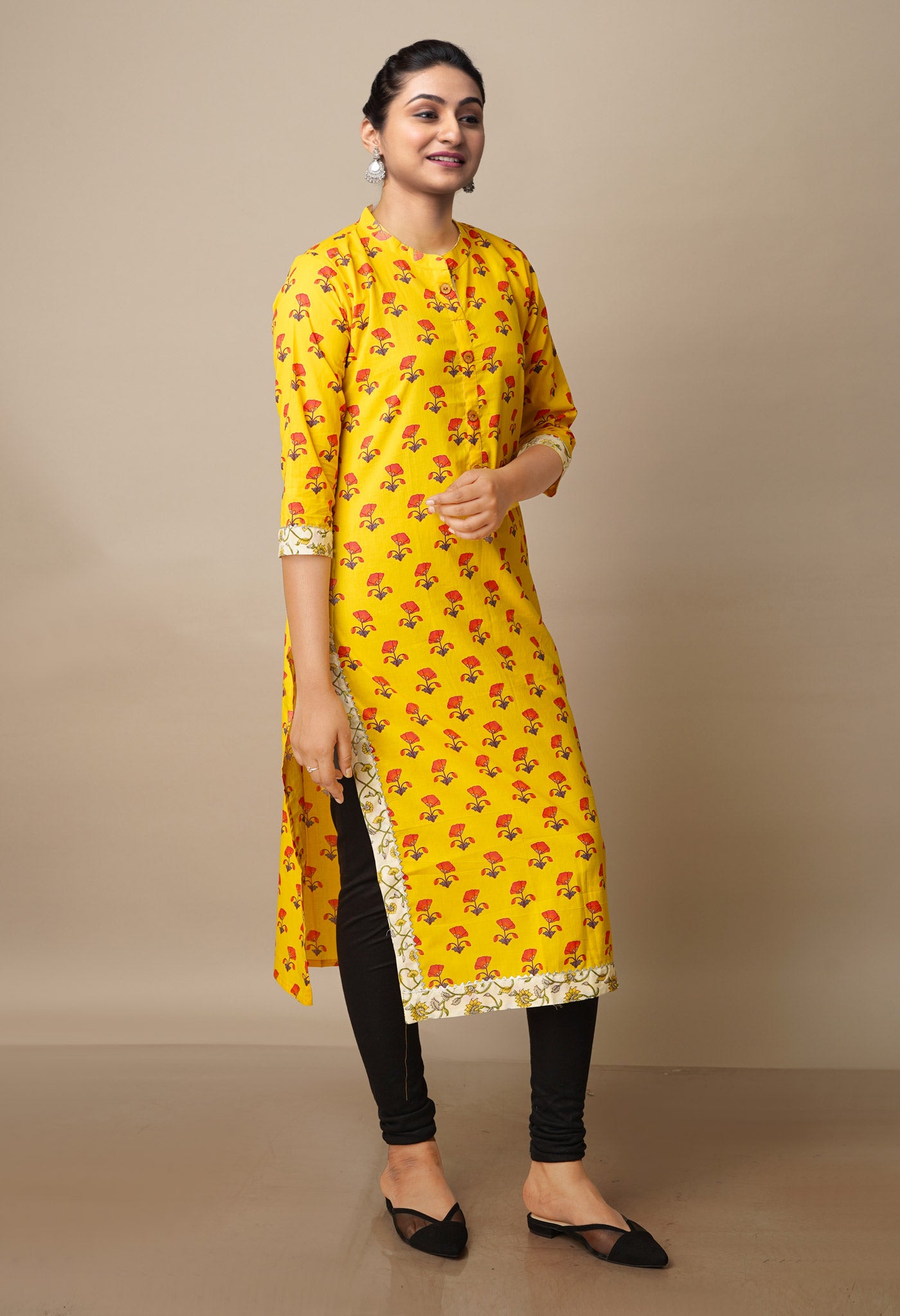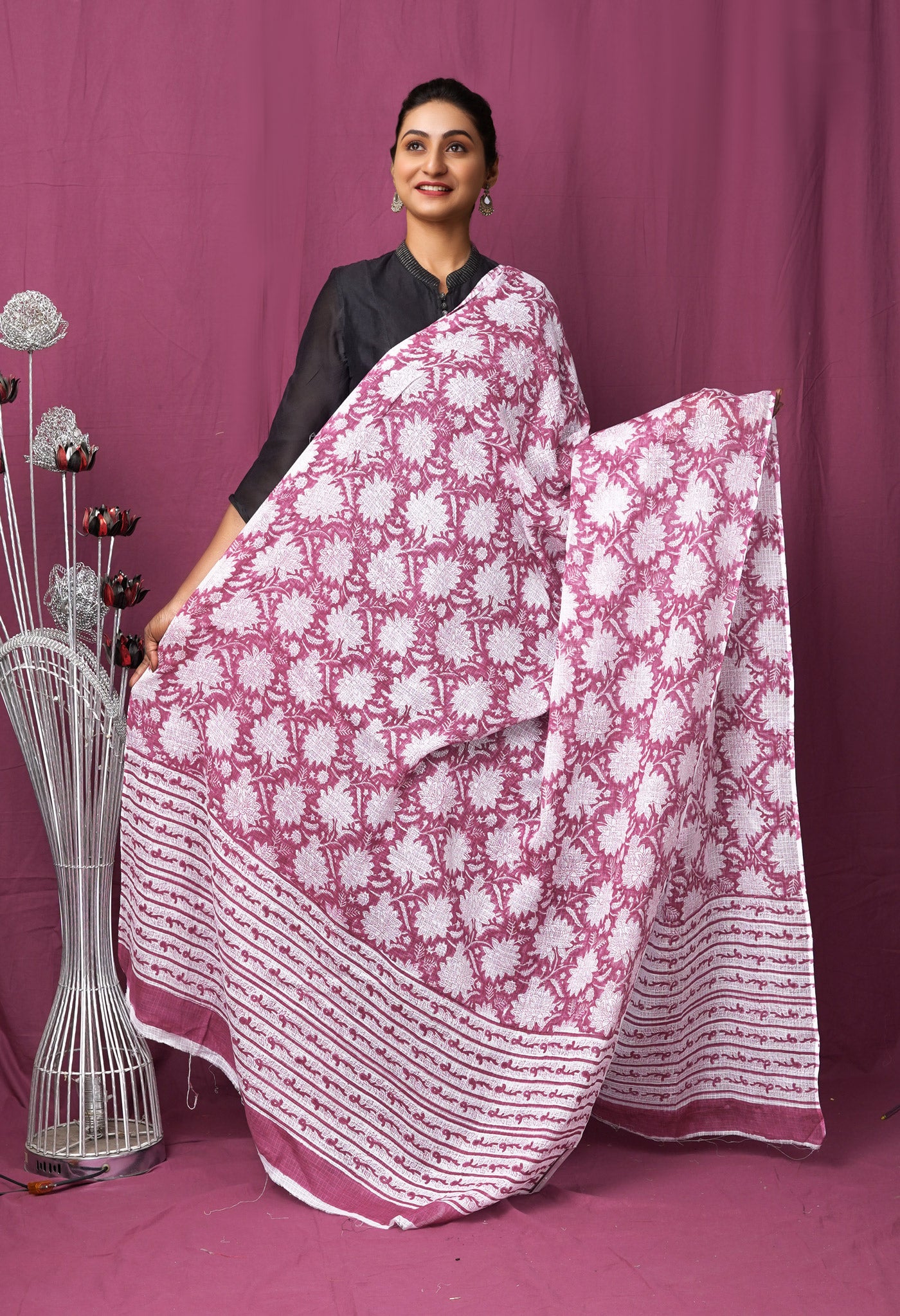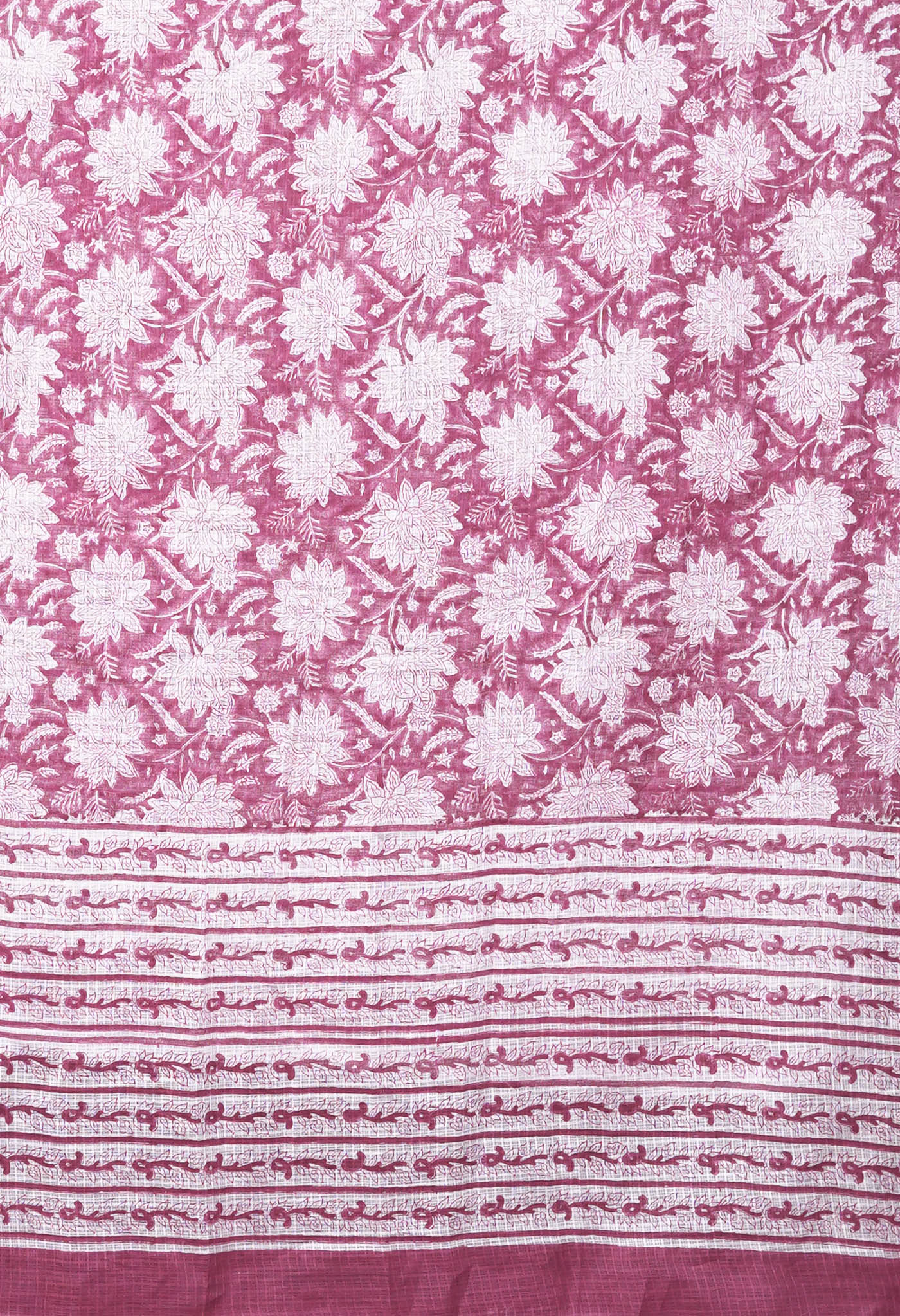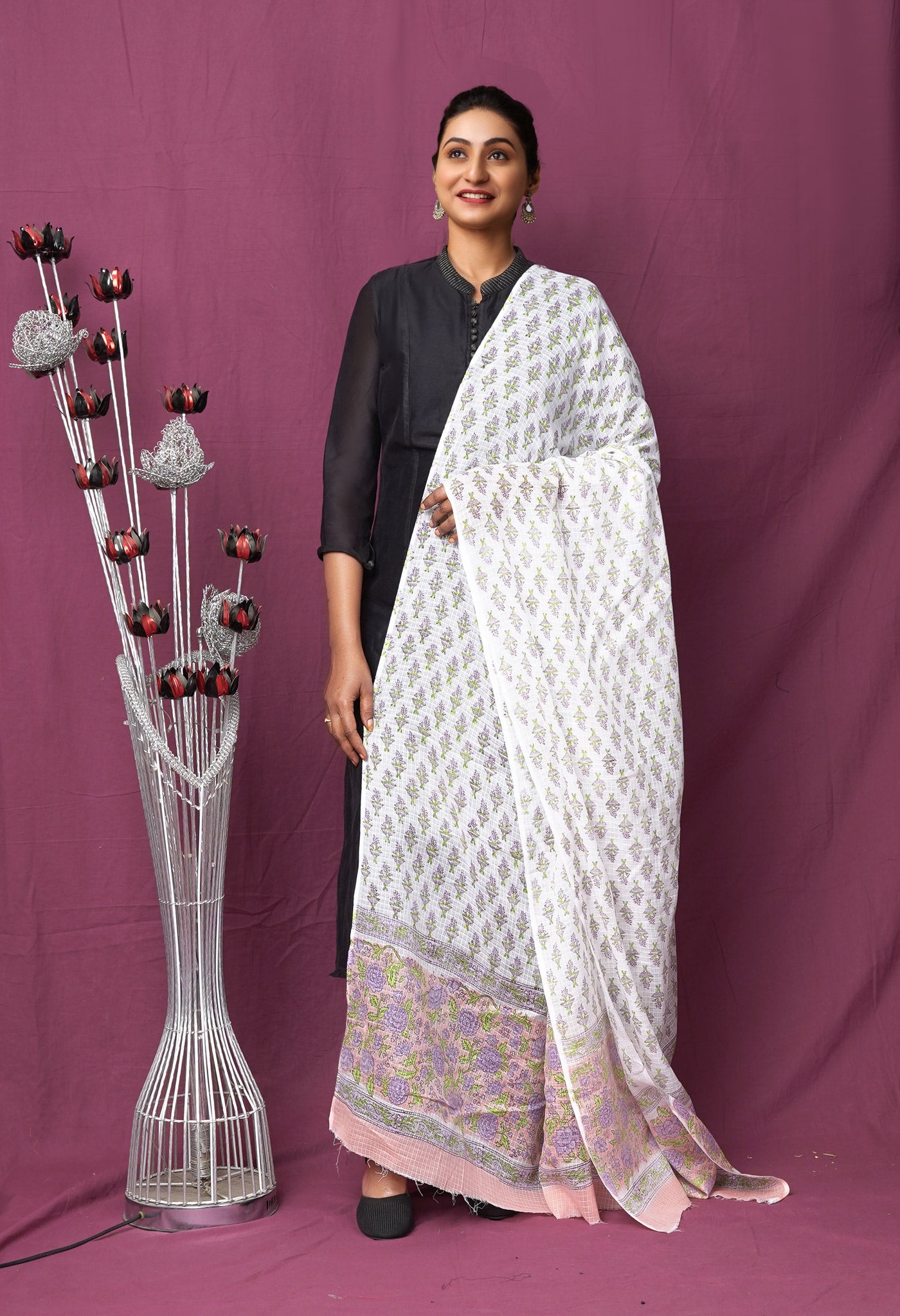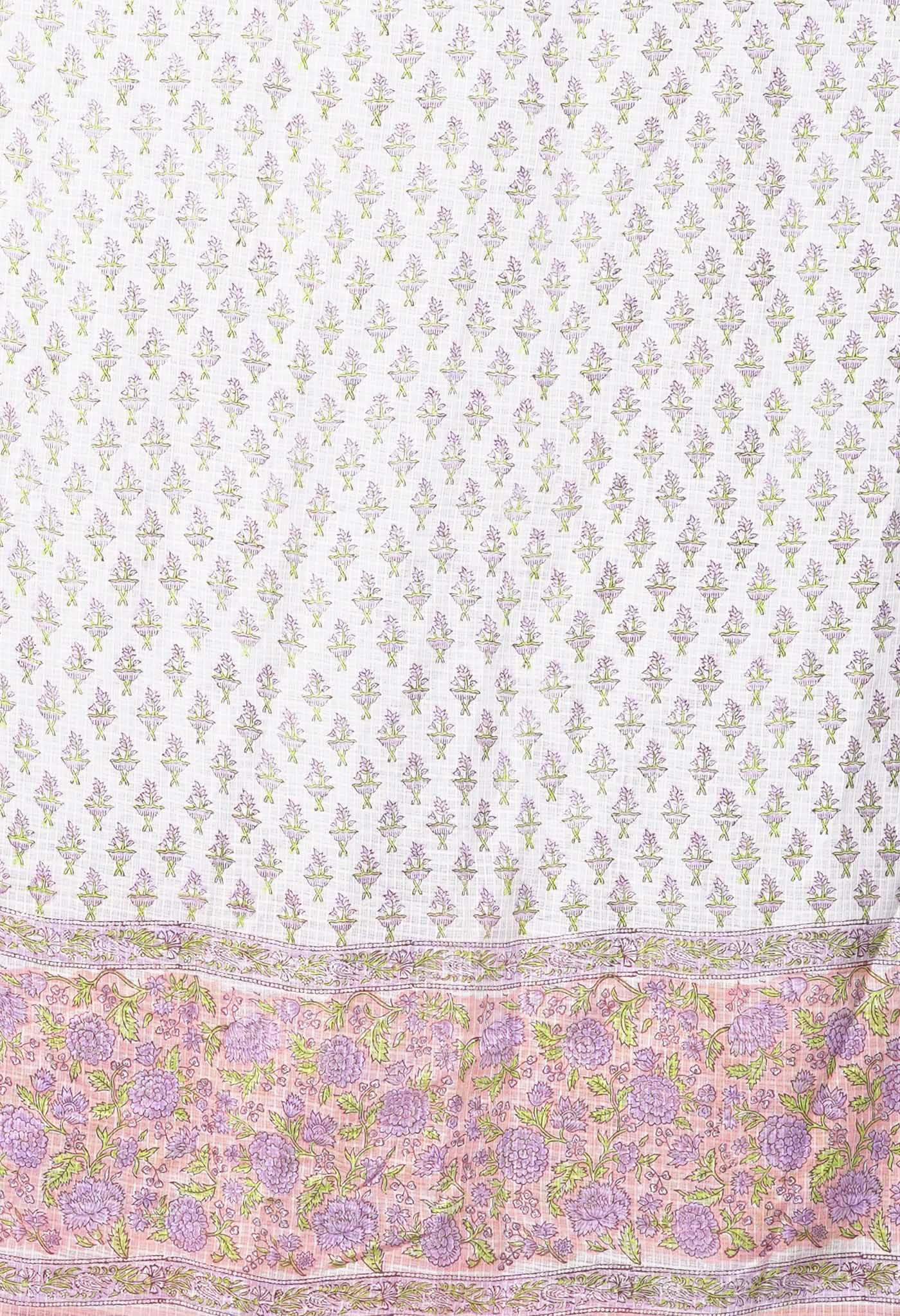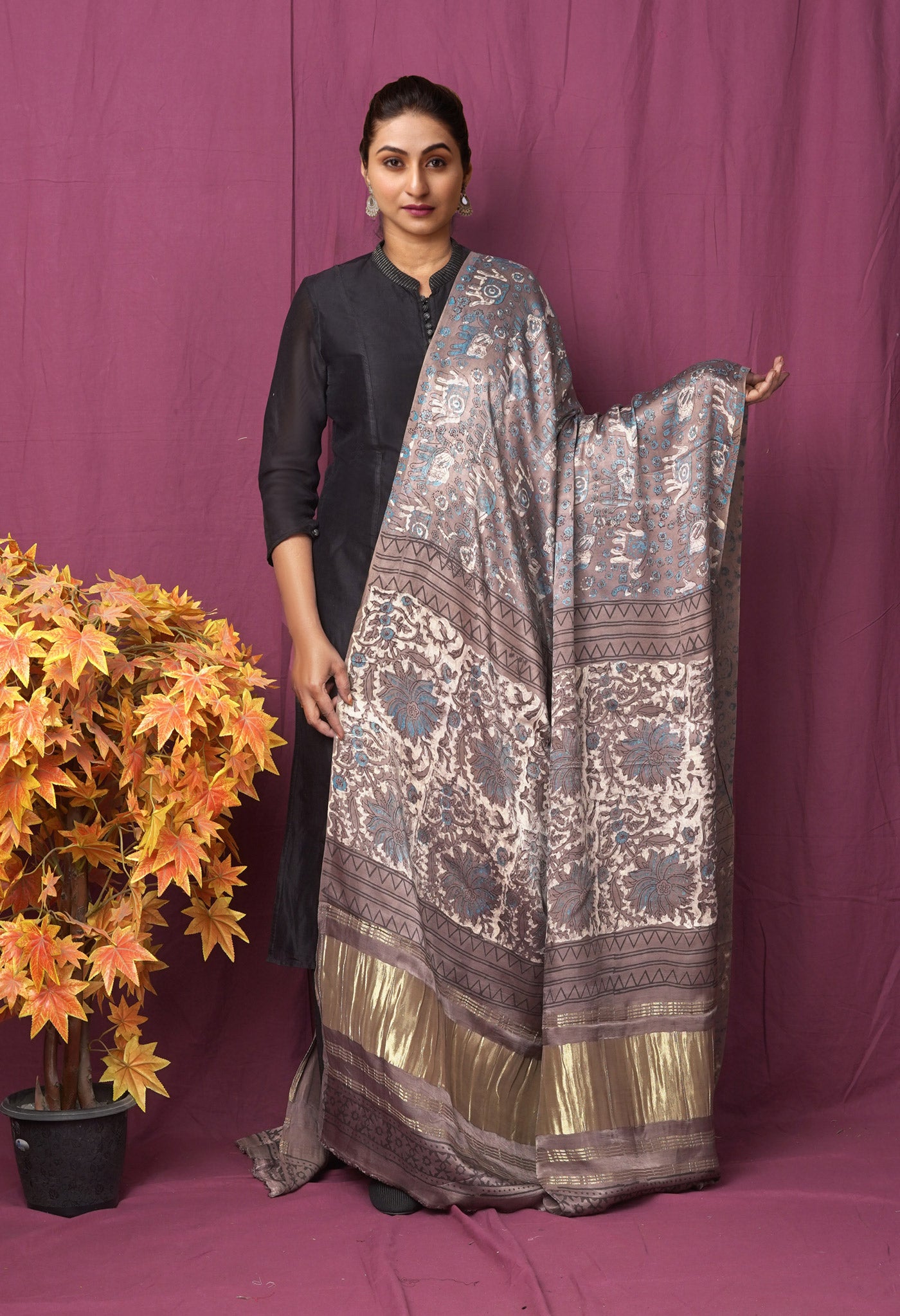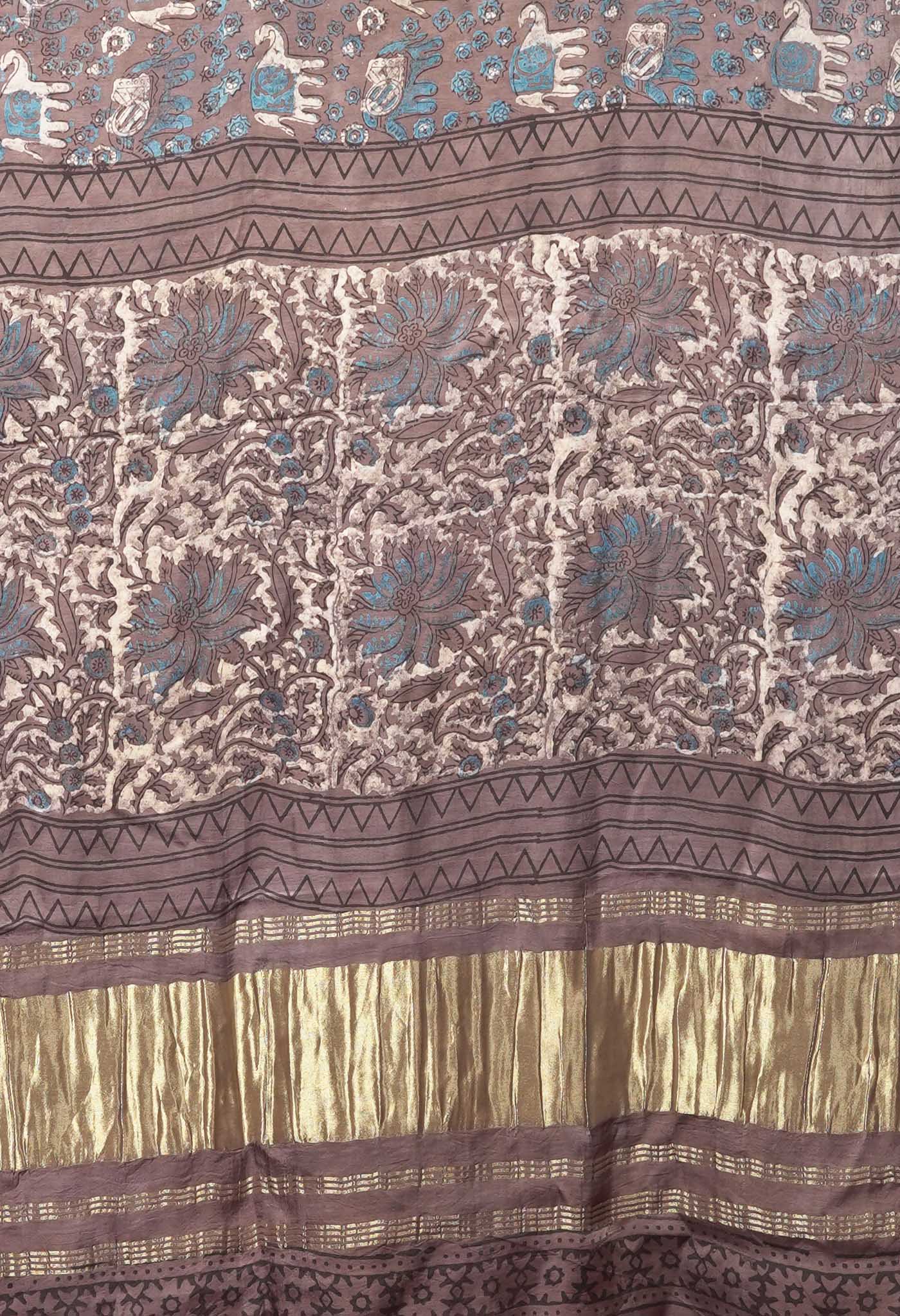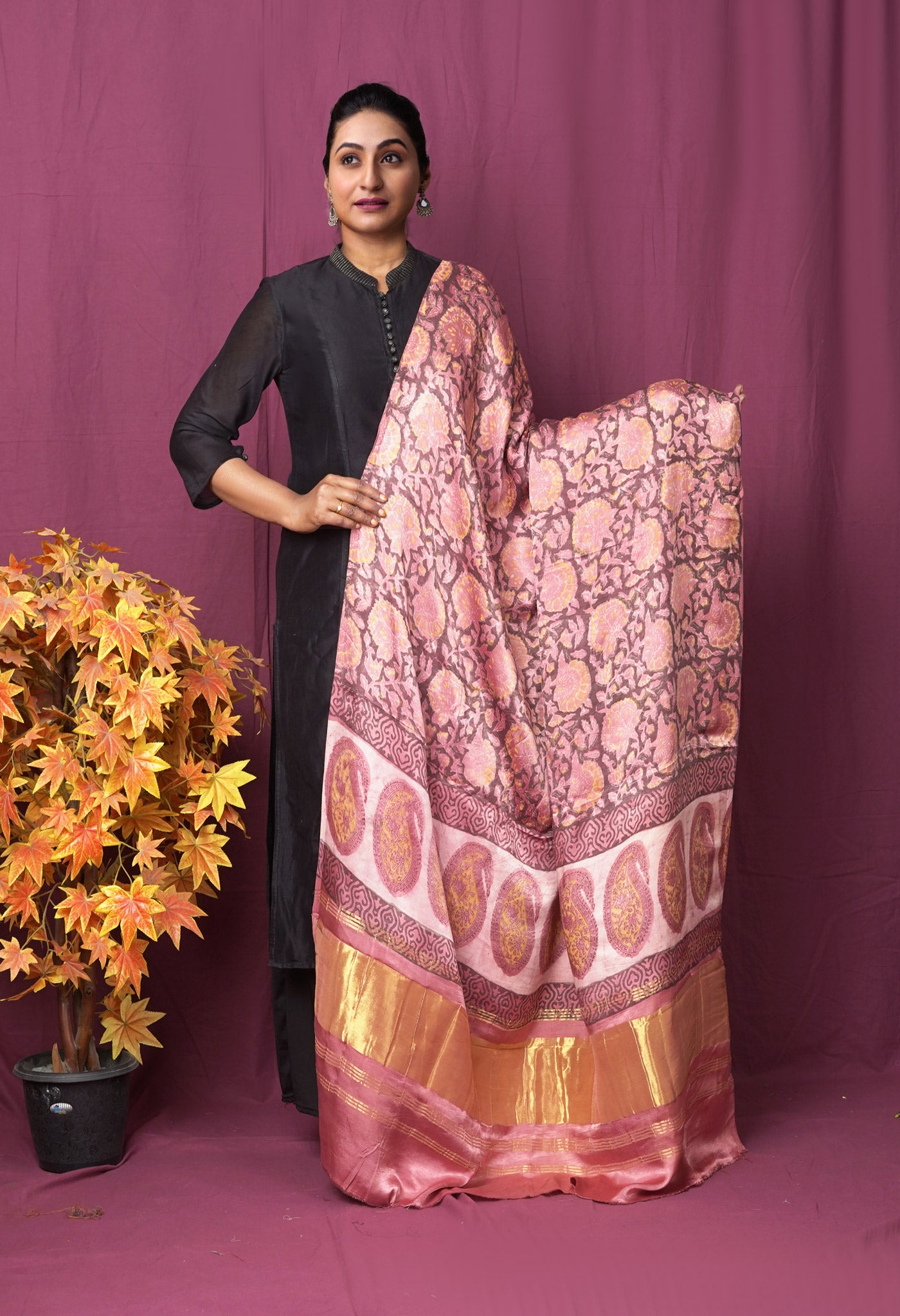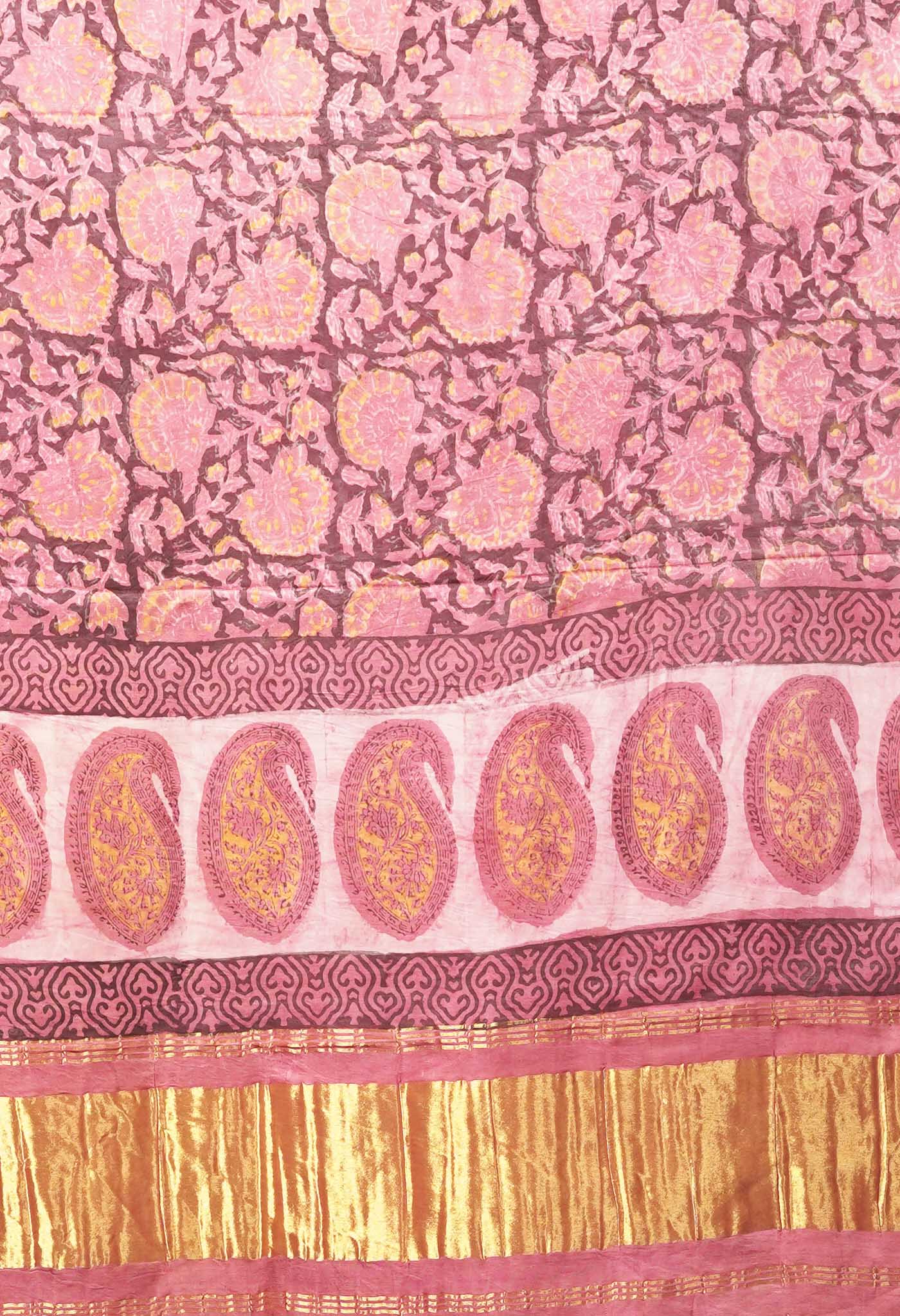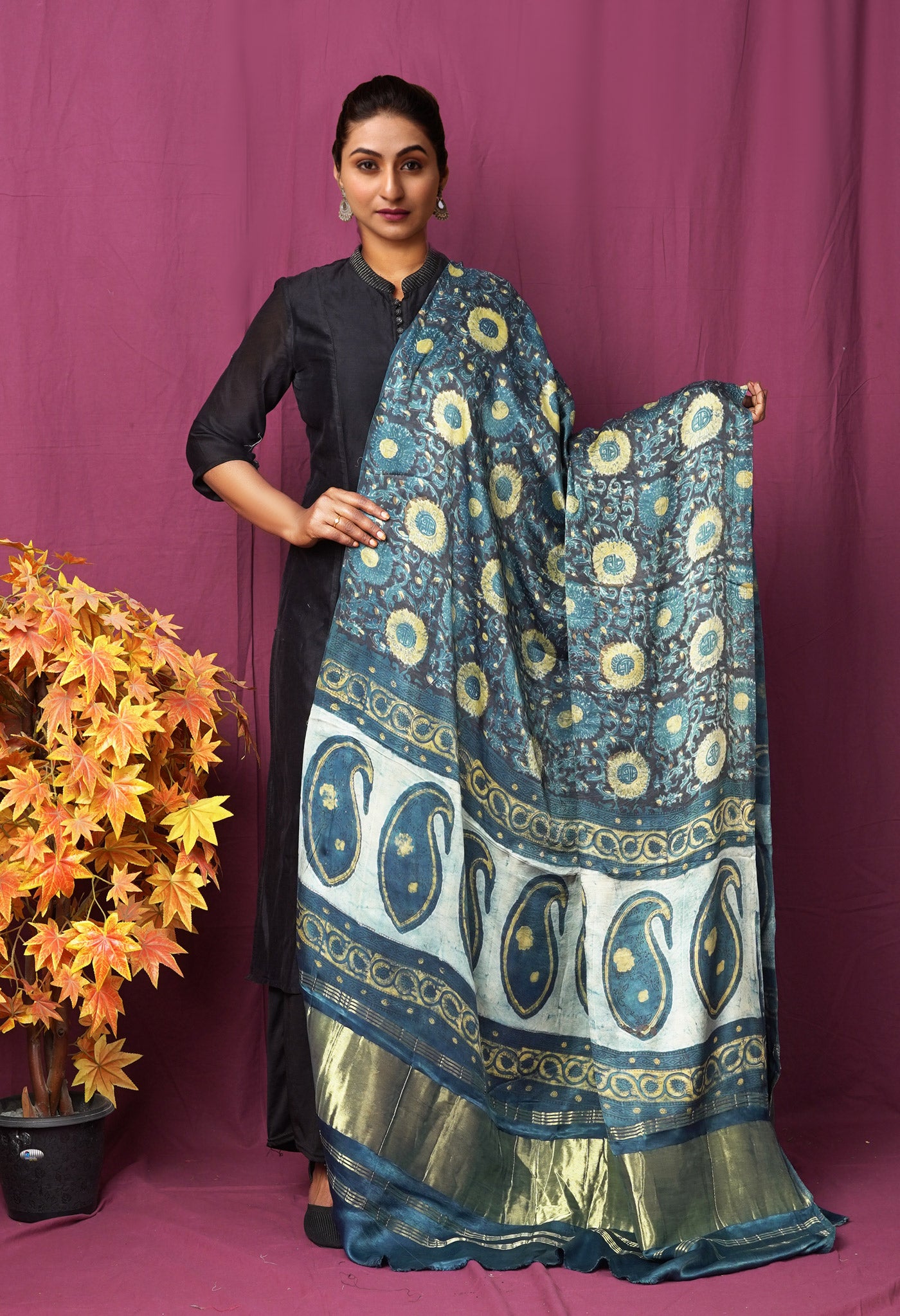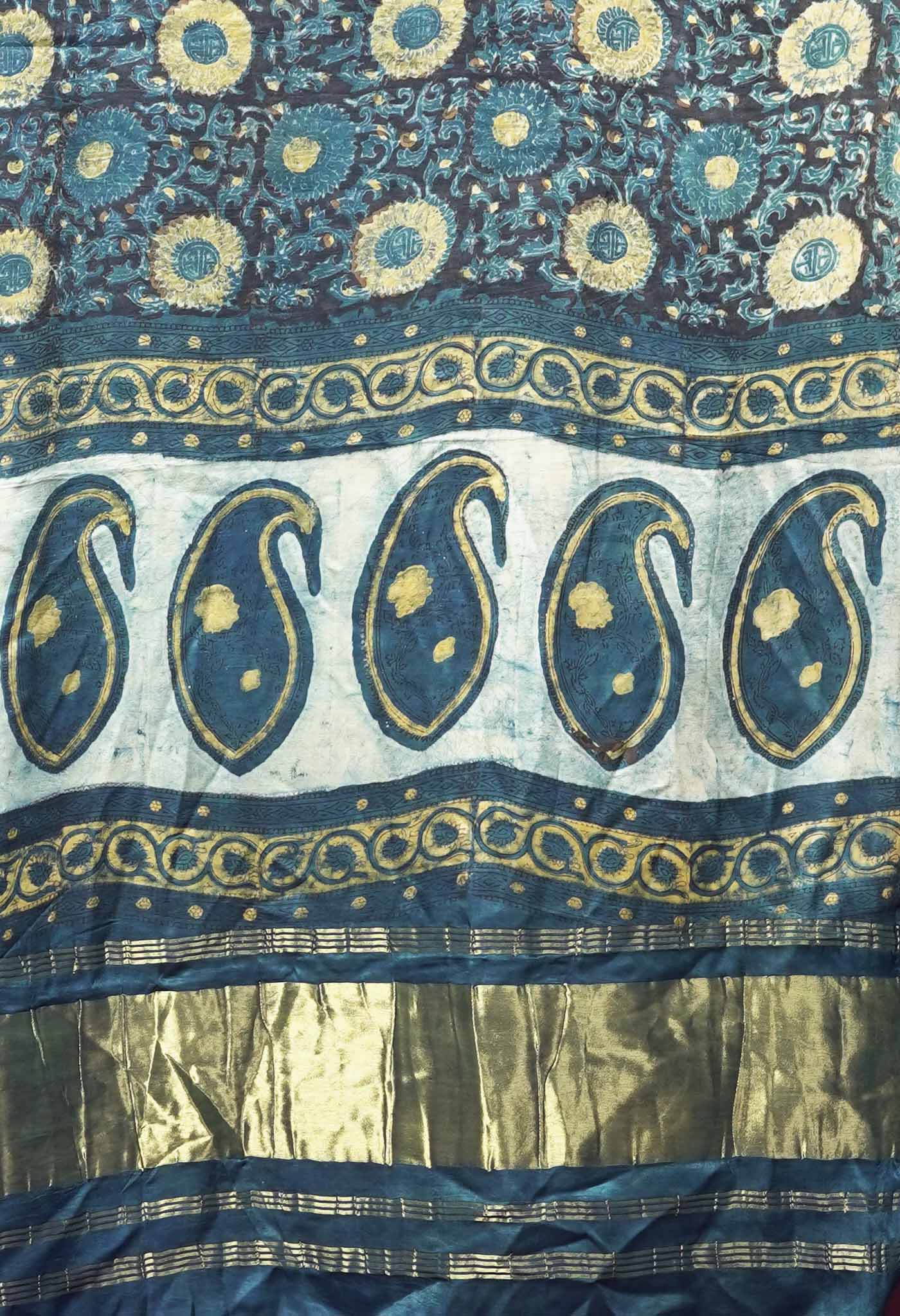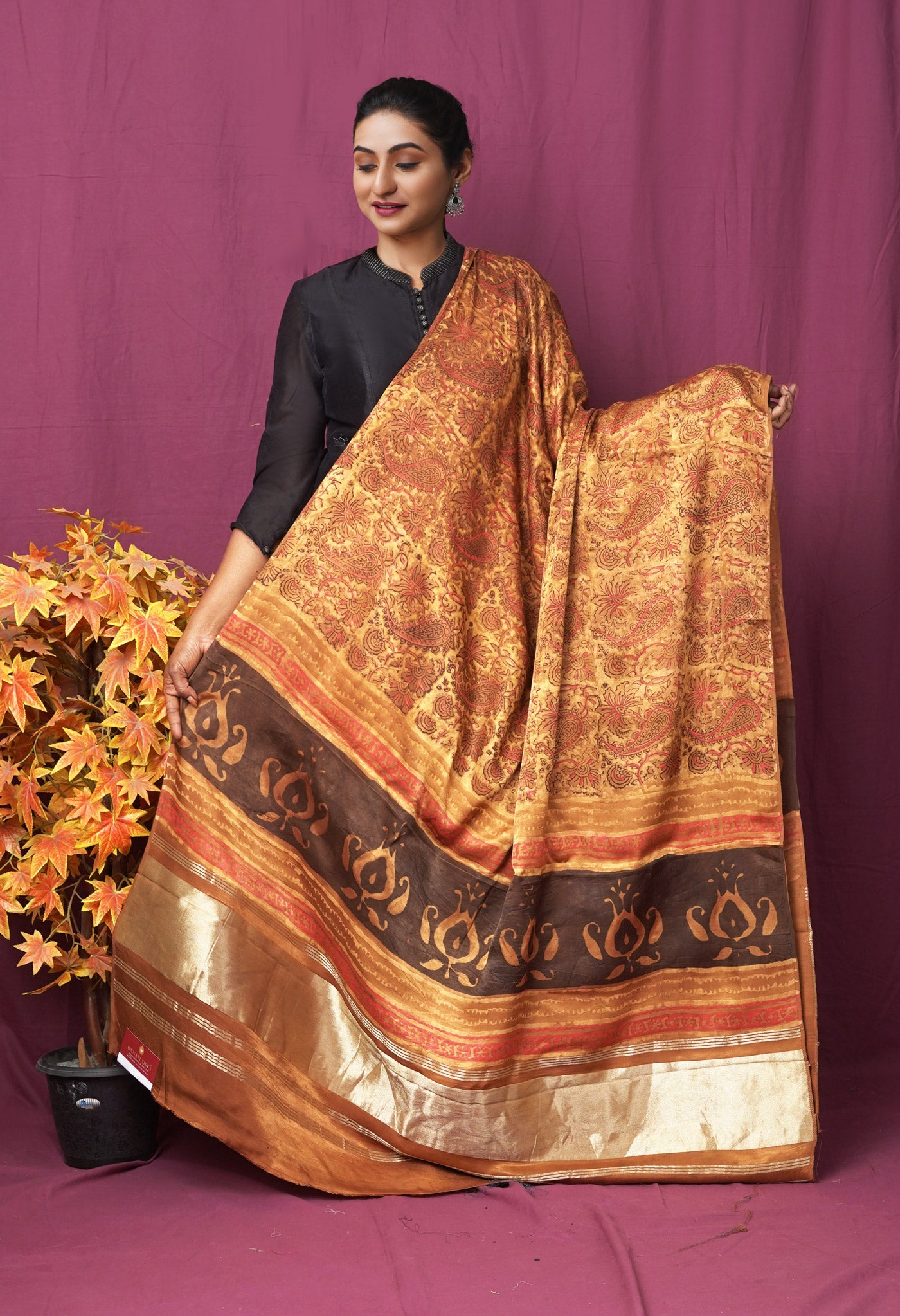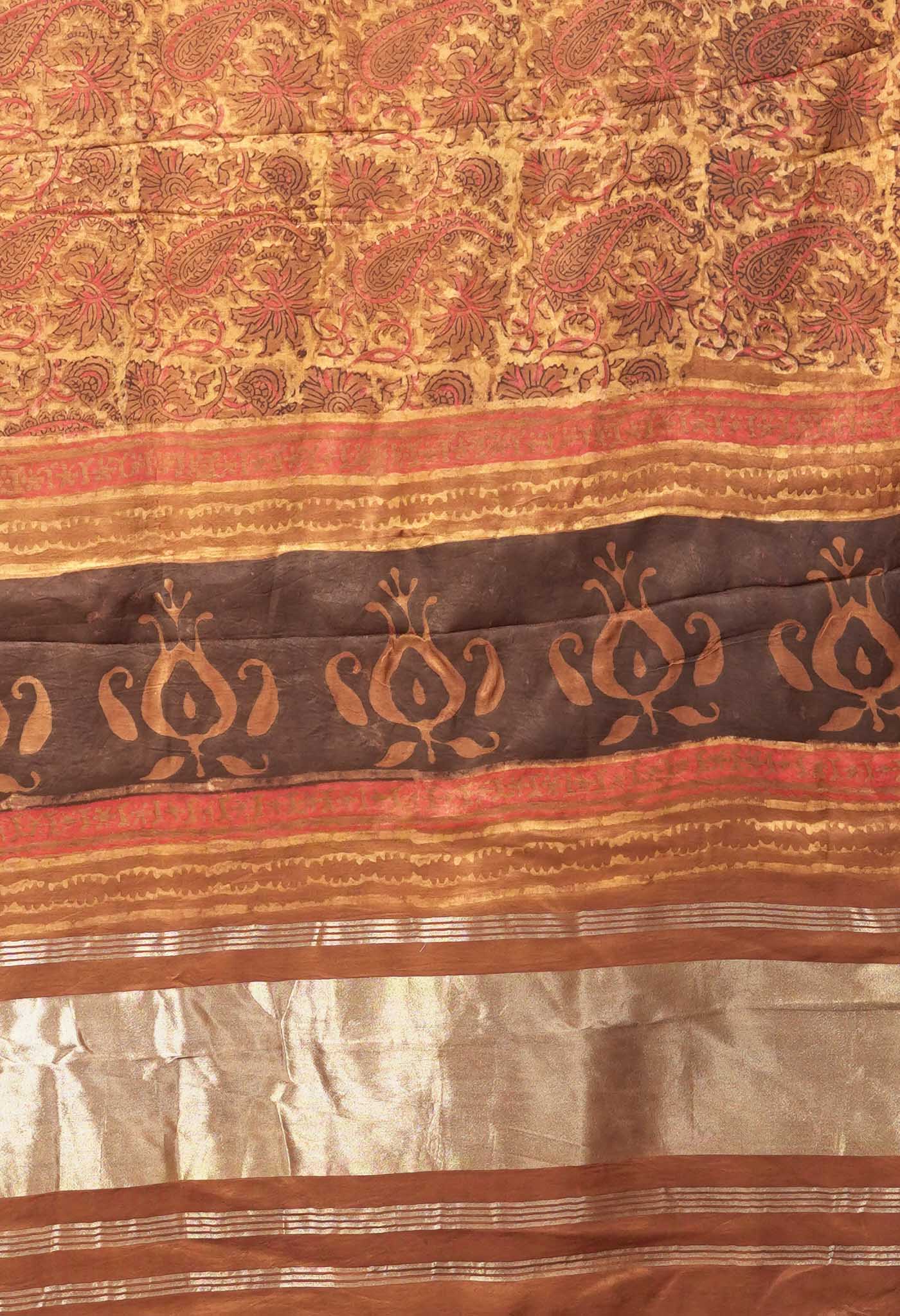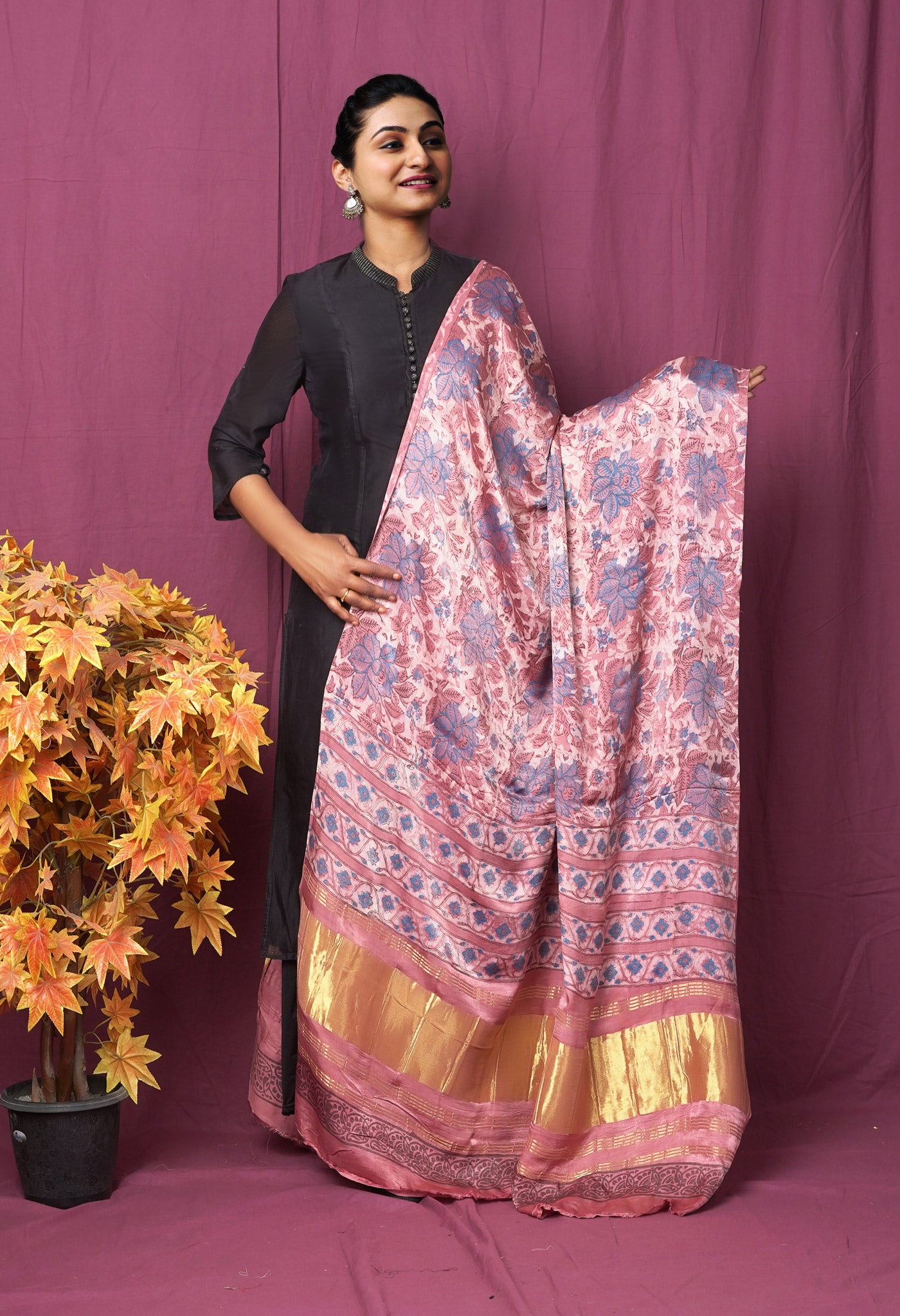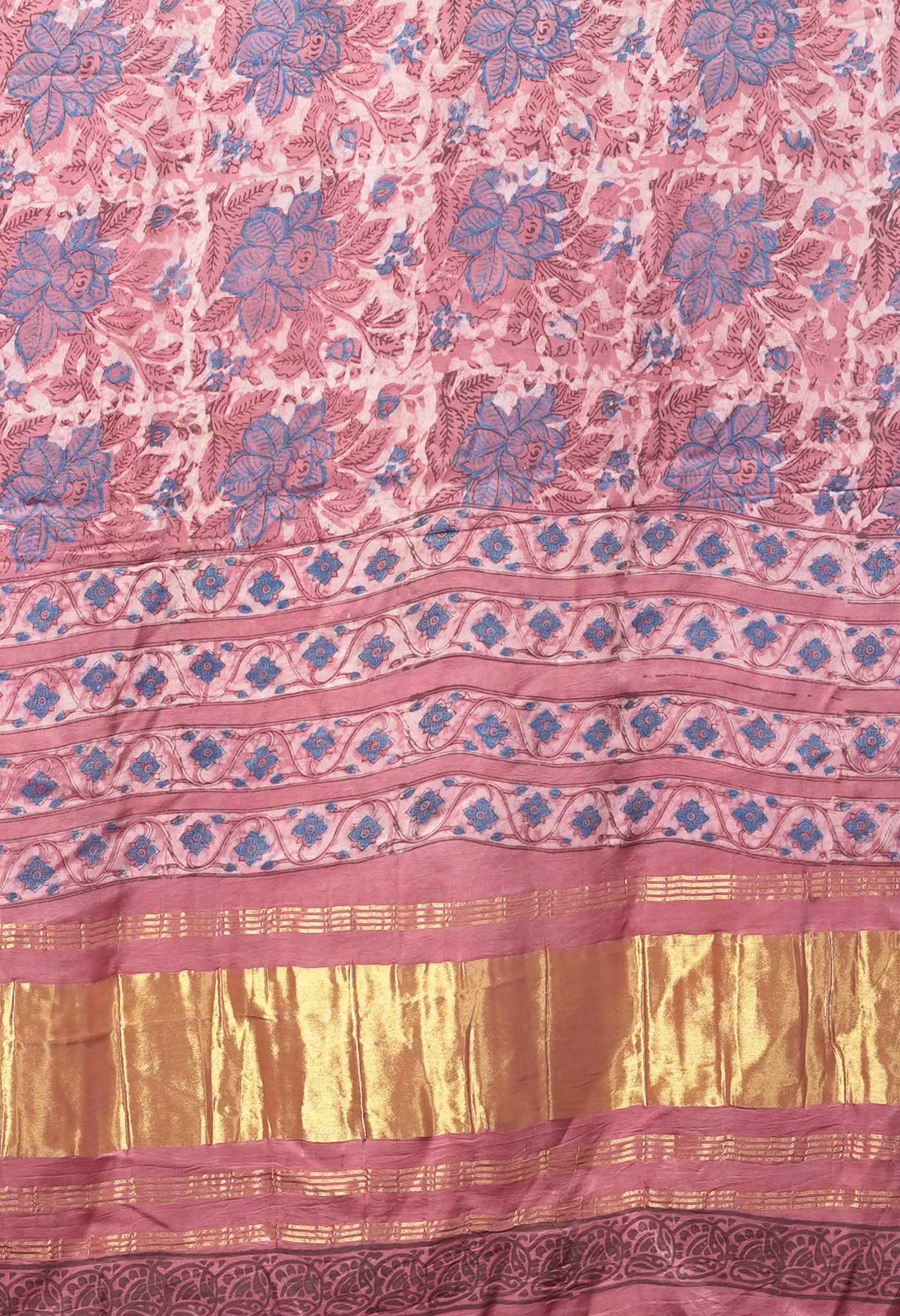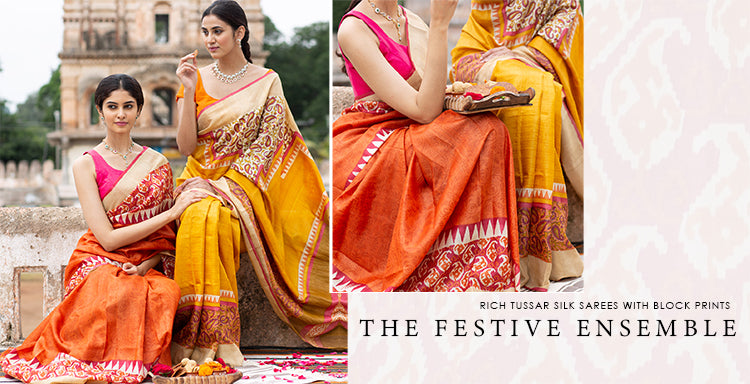
Tussar Silks – a timeless affair in soft silky weaves
If there is any silk comparable to the pure or cultivated mulberry silk, it is the wonderful Tussar or Kosa silk. Of fine texture, the pale golden sheen fibre Tussar has been very much popular as a saree fabric.
What is so special about the Tussar?

Tussar silk is light, soft to the touch with an affinity for most dyes that is phenomenal. The tribal belt of Chattisgarh, Jharkhand and Bhagalpur has some of the finest weaving centres of Tussar sarees, where the skill of the craftsmen and the artisans is beyond compare.
Extremely soft and fine weaves are hand woven and beautifully decorated with adornments like zardozi, kundan work, mirror work, thread embroidery and a host of other fine arty works.
Tribal art hand painting with depictions of characters from the epics, nature themes, floral art work and scenes from daily life are also brilliantly detailed and drawn purely from memory and minor sketches.
From a fine yarn to a fine weave.
Made from the silken filaments produced by the moth genus Antheraea, that dwell on trees other than the Sal or Arjun in the forests of Chattisgarh and Jharkhand, this short fibre silk has become a household name when it comes to hunting for fine silk sarees.
Sometimes referred to as ‘wild’ or ‘Vanya’ silk since it comes from the forest, Tussar is basically collected after cocoons are boiled in hot water or dried in the hot sun and the fibre threads reeled in. The Bhagalpur variety is famous for its Ahimsa or Non-violent silk since the wait period of about fifteen days allows the silkworms to leave the cocoons unharmed and then the cocoons are put in boiling water.
Two things about Tussar silks stand out.
- The good weave finish and the brilliant choice of colours making them very suitable for adaption to any traditional weaving style.
- llustrative and sharp the organic colours that are used, come out so fine that the fabric acquires tremendous ethnic value. Today even chemical dyes are made use of to improve the range of colours and mixes.
In addition, the good quality of the yarn gives strength and durability to the weave.
Tussar is adaptable - to a host of traditional styles of weaving and fusion features.
 You have the rich thematic Patachitra sarees on Tussar Silks. Rich in colour, extraordinary designs and motifs, the Pattachitra painting on the Silk saree involves the narration of mythological stories in a simple but lucid manner. Murals of religious venues, themes from Gita Govinda by Jaydev, stories about Lord Jagannatha and the Radha Krishna saga, scenes from the epics Mahabharata and Ramayana, are all popular subjects for Pattachitra.
You have the rich thematic Patachitra sarees on Tussar Silks. Rich in colour, extraordinary designs and motifs, the Pattachitra painting on the Silk saree involves the narration of mythological stories in a simple but lucid manner. Murals of religious venues, themes from Gita Govinda by Jaydev, stories about Lord Jagannatha and the Radha Krishna saga, scenes from the epics Mahabharata and Ramayana, are all popular subjects for Pattachitra.
Lines are bold, very clean, angular and quite sharp. The backdrop would have flowers and other floral representations to distinguish the figures that are drawn or represented in the foreground. There are decorative borders and a theme designed in the form of a narrative becomes evident.
Other fine decorative painting experiments on the Tussar silks
There is the unique Warli painting, a tribal art of white coloured painting or depiction of human figurines and objects of everyday life on broad canvas and fine fabrics like the Tussar Silks. The themes of such paintings depict humans, animals, and scenes from daily life. The paintings resemble pre-historic cave paintings in execution.
Then you have the Kalamkari, with the subjects of Gods, temple hangings, epic scenes and other religious themes, or nature works with flora and fauna in brilliant hand painting on the Tussar Silk Saree. Marked features of this style are simplicity, good use of colour with some colours given prominence. There is sharpness in the depictions, and the use of motifs like trees, creepers, flowers, leaves, birds are popular subjects.
 Modern art painting includes all artistic works from the latter half of the 19th century up to the 70s and contains themes that depict the character and expressions of this era. Not content with just abstract designs and additional adornments, fashion designers in India have seen fit to bring an appreciated art onto a mobile canvas like the Tussar Silk that has served two purposes. It has created a new avenue for budding talent in the field of modern art painting, as well as, provided fresh-range fabrics for the market to revel in.
Modern art painting includes all artistic works from the latter half of the 19th century up to the 70s and contains themes that depict the character and expressions of this era. Not content with just abstract designs and additional adornments, fashion designers in India have seen fit to bring an appreciated art onto a mobile canvas like the Tussar Silk that has served two purposes. It has created a new avenue for budding talent in the field of modern art painting, as well as, provided fresh-range fabrics for the market to revel in.
Feeling Good in Tussar fusion
There are also a good range of fusion varieties of Tussar silks with Banarasi Handlooms and Gicha Jute. Fine weaves that have a lot of patchwork and embroidery to go with the extraordinary smoothness and soft texture. Exquisite, attractive and highly appealing, the Tussar silk sarees serve for a number of exclusive occasions.
Be it wedding wear or for bridal attire, for grand parties or corporate functions, festivals or religious rites, the Tussar Silk Saree is an eye catcher that matches the occasion.
Enamoured by the Tussar silk sarees
If the entire range of Tussars could be viewed at a single place, Unnati Silks definitely had it and a wonderful collection at that. See its latest range of Tussar Silks and enjoy. Do buy some of them.
- You have the pure handloom Bengal Tussar silk saree. It is sheer joy to see broad zari borders at top and bottom with the shine and smoothness in the plain middle. There are self-colored prints in some and the temple design in other sarees that make it even more attractive. Tassels to the pallu liven up the look tremendously.
- There is a line of Tussar silks with the unique traditional Bagru prints which have their own exotic appeal. Light piping at both ends of the saree add to the look.
- Then you have the Bengal Tussar silk with some lovely block prints in florals and other designs with beautiful booti arrays on the pallu.
- There are some forays into block prints with the blended Tussar and Dupion silk sarees.
- Prints again but with a healthy mix of floral leafy vines on the body and geometric prints on the borders.
- You have Ghicha Tussar silks of two kinds – one with the Warli Painting, the other type having embroidery.
The quality of the yarn and its affinity to colours have allowed experimentation and fusion and with newer adornments introduced every now and then. The fashion world will definitely have a lot more to do with the exclusive Tussars in the coming years.
Tussar Silks are a class apart; fabrics of fine count they had taken the market by storm and still continue to ‘wow’ with newer and newer offerings.

